ETICO - Fighting Corruption in Education

ETICO, a unique new portal aimed at fighting corruption in education systems around the world, is being launched today by the International Institute for Educational Planning (IIEP-UNESCO).
Corruption is often hard to track and measure, but is found at different levels in countries’ education systems and is hampering access to education and children’s learning. It results in children being denied a good-quality education. Examples of corruption in education range from ghost schools and fake diplomas, to missing textbooks, stolen school supplies, absent teachers and misallocation of school grants.
For example, surveys carried out by IIEP partners tackling corruption estimate that the salaries of absent or ghost teachers may account for 15-20% of payroll costs in some countries; in some cases this is equal to half of the funds allocated to improving school buildings, providing better class equipment and buying school textbooks, etc.
The ETICO database, which houses the latest cutting-edge research tracking ethics and corruption, is a gateway for accessing expert training materials on transparency, accountability and anti-corruption issues in education and for support in implementing anti-corruption tools and strategies.
The global online platform will serve as a key interactive discussion hub for national and international partners who are promoting transparency. It will provide them with the opportunity to upload and share research on this crucial topic to help create a stronger united front against corruption in education.
“It is estimated that corruption is sucking millions of dollars out of the system, and as a result many children are missing out on an education due to malpractices and a serious lack of ethics in the system. The ETICO platform aims to help prevent this by bringing all of the key stakeholders together to fight against the problem and offer expert advice,” IIEP’s Senior Researcher on anti-corruption and ethics in education, Muriel Poisson, said.
Through its blog , the ETICO platform will host in-depth discussions on tackling corruption by sharing news and information, as well as highlighting best practices in countries where interventions against corruption in education have proved successful.
The launch of ETICO coincides with the release of an important new IIEP publication, Achieving Transparency in Pro-Poor Education Incentives . The book outlines the best ways to ensure that scholarships, conditional cash transfers, free school meals, etc., actually reach children from poor backgrounds and families who need it most.
For example, in South Africa, the quintile ranking system was designed to provide enhanced funding to schools serving the poorest students. To ensure that funds are reaching the right schools, several measures have been introduced, such as the use of objective, transparent and publicly known targeting tables. This system is recognized as an important effort towards ensuring greater equity in education by cutting school fees for the poorest children in South Africa, thereby giving them access to education.
In Brazil, the creation of food school councils has reduced the risks of misappropriation of food or fraud in food procurement – both problems in the past – by institutionalizing the process of continuous programme monitoring and accountability. Relying on the participation of the school community and civil society, these councils scrutinize school menus and their related expenses. They help reduce delay in the transfer of resources, cut down operational costs and improve the quality of goods. The Brazilian school lunch programme reaches over 45 million people, and provides stability to the lives of poor families and students.
In the Indian state of Rajasthan, 28% of schools have introduced display boards that are available for public scrutiny. Usually painted on the school building, they display key information related to the daily functioning of the school, e.g. all financial investments made by the school; teacher attendance, etc. Publicly displayed transparency boards are now regarded as an important feature of community-based monitoring and public hearings are held where people are invited to give testimonies of corrupt practices and government officials are called upon to take action.
Presenting research comparing seven projects implemented worldwide, Achieving Transparency in Pro-Poor Education Incentives shows that measures taken to confront corruption risks – such as school display boards, local transparency mechanisms, appeal mechanisms, social audits, and informal whistleblowing, among actions taken is key in the battle against corruption in education. These measures are seen as crucial tools for achieving the Education for All goals . They are presented in detail on ETICO, together with hundreds of other such cases.
- Visit the ETICO portal


Event International Conference of the Memory of the World Programme, incorporating the 4th Global Policy Forum 28 October 2024 - 29 October 2024

Other recent news

- IIEP Buenos Aires

- A global institute
- Governing Board
- Expert directory
- 60th anniversary
- Monitoring and evaluation
- Latest news
- Upcoming events
- PlanED: The IIEP podcast
- Partnering with IIEP
- Career opportunities
- 11th Medium-Term Strategy
- Planning and management to improve learning
- Inclusion in education
- Using digital tools to promote transparency and accountability
Ethics and corruption in education
- Digital technology to transform education
- Crisis-sensitive educational planning
- Rethinking national school calendars for climate-resilient learning
- Skills for the future
- Interactive map
- Foundations of education sector planning programmes
- Online specialized courses
- Customized, on-demand training
- Training in Buenos Aires
- Training in Dakar
- Preparation of strategic plans
- Sector diagnosis
- Costs and financing of education
- Tools for planning
- Crisis-sensitive education planning
- Supporting training centres
- Support for basic education quality management
- Gender at the Centre
- Teacher careers
- Geospatial data
- Cities and Education 2030
- Learning assessment data
- Governance and quality assurance
- School grants
- Early childhood education
- Flexible learning pathways in higher education
- Instructional leaders
- Planning for teachers in times of crisis and displacement
- Planning to fulfil the right to education
- Thematic resource portals
- Policy Fora
- Network of Education Policy Specialists in Latin America
- Publications
- Briefs, Papers, Tools
- Search the collection
- Visitors information
- Planipolis (Education plans and policies)
- IIEP Learning Portal
- Ethics and corruption ETICO Platform
- PEFOP (Vocational Training in Africa)
- SITEAL (Latin America)
- Policy toolbox
- Education for safety, resilience and social cohesion
- Health and Education Resource Centre
- Interactive Map
- Search deploy
- Our mission
- Thematic priorities
- Governance, transparency, and finance
corruption.jpg

Financial embezzlement linked to the building of schools or purchase of school equipment, favouritism in recruitment or promotion of teachers: corruption has not spared the education sector. Fighting these practices enables governments to strengthen their educational systems: a precondition for the attainment of the United Nations’ Sustainable Development Goals , part of which includes quality education for all. Discover all of IIEP-UNESCO’s actions, activities, and resources relating to these issues.
This programme, initiated in 2001, aims to strengthen planning strategies to develop a culture of ethics and fight corruption in the education sector, by integrating the principles of transparency and accountability at the political level. With the benefit of the Institute’s research and experience in this field, our experts support UNESCO Member States in strengthening their skills in these areas, through in-country training programmes and technical support missions.
Ethics and anti-corruption strategies: Our training courses
Map-etico-training.jpg.

IIEP regularly offers training courses on transparency, accountability, and the fight against corruption, most often in response to requests from UNESCO Member States, development partners, or civil society organizations. In total, more than 2,600 people have been trained by IIEP since 2003 in various subjects related to ethics and corruption in education. One of our training programmes is an eight-week online course launched in September 2020 on the theme of ‘ Transparency, accountability and measures for fighting corruption in education ’.
Find out more about the Ethics and Corruption training course .
Residential training courses and study trips
Our specialists in ethics and corruption in education deliver tailor-made training in countries that request it. They also organize study trips to foster the sharing of experiences between countries. A few recent examples:
- Training seminar on ‘Integrity, ethics, and measures to fight corruption in higher education’, in Uzbekistan .
- Study trips to Switzerland with political officials from Kosovo * 1 and Montenegro , on the theme of integrity in higher education.
- Study trip to Australia for delegations from seven Asian countries , around the My School initiative.
Access the training content on ethics and anti-corruption strategies developed by IIEP.
1 All references to Kosovo are made in the context of UN Security Council Resolution 1244 (1999).
Fighting corruption in education: Our research
IIEP leads a series of research programmes to document efficient strategies for promoting transparency and accountability in the areas of educational planning and management.
Our recent projects and research findings
- Open government in education [ongoing]
- Open school data
- Fighting academic fraud
- Adverse effects of private supplementary schooling
- Efficient use and conception of teacher codes of conduct
- Achieving transparency in pro-poor education incentives
- Formula funding of schools, decentralization & corruption: A comparative analysis
Access almost 30 IIEP publications on the theme of Ethics and corruption in education.
Education and corruption: How does IIEP promote political dialogue at the international level?
To facilitate the sharing of methodological tools, strategies, and good practice among researchers and political decision-makers in education, IIEP has had the opportunity to organize or participate in fora relating to the fight against corruption in education. These include:
International political forum, Using open school data to combat corruption , in Manila, the Philippines. Educational policy forum, Integrity planning in higher education , in Paris, France.
The Institute also shares its research findings at events such as the Global Anti-Corruption & Integrity Forum of the Organisation for Economic Cooperation and Development (OECD) or the International Anti-Corruption Conference (IACC).
Our technical support to States
Integrity evaluations, conception of codes of conduct or the implementation of public expenditure tracking surveys: IIEP offers concrete solutions to help UNESCO Member States fight corruption in education.
Evaluation of the risks of corruption in education
IIEP carries out exhaustive evaluations of the risks of corruption in the education sector of a given country, including in the areas of pre-school, primary, secondary, and higher education, as well as technical and vocational training (TVET). Based on its experience, IIEP has developed its own methodology to adapt to the context of each country. A few examples of integrity evaluations:
- Pre-school teaching and TVET in Georgia, at the request of the Ministry of Education.
- The education sector in Guinea , at the request of the National Anti-Corruption Agency (only available in French).
- The higher education sector in Georgia , at the request of the Prime Minister.
- The whole education sector of Kosovo* , at the request of the United Nations Development Programme.
- The whole education sector of Serbia and Ukraine in the context of initiatives led by the OECD.
Public expenditure tracking surveys
IIEP contributes to strengthening the capacity of national teams to conceive and implement public expenditure tracking surveys. The objective is to trace funding flows intended for education and measure the rate of waste.
South Africa, Burkina Faso, Cambodia, Ghana and Uganda have benefited from the Institute’s support on these issues.
Find out more
Teacher codes of conduct
The Institute offers support to UNESCO Member States involved in the process of launching or revising their teacher codes of conduct. A few examples:
- Support for the creation and implementation of a teacher code of conduct in Kuwait .
- Support for the drafting of a code of conduct in Laos .
Access the teacher codes of conduct of almost 80 countries via our interactive map .
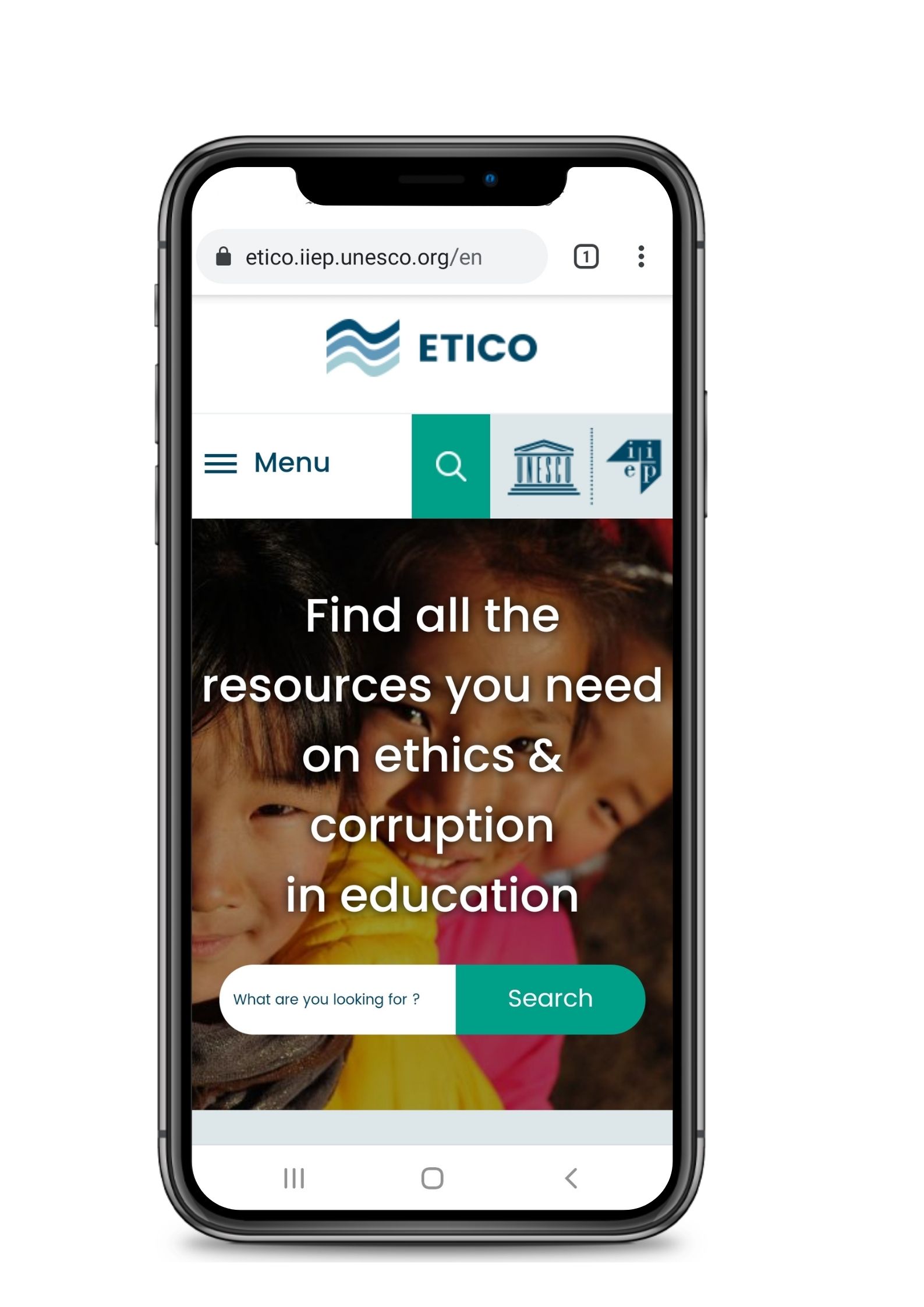
ETICO online platform
All the resources produced and collected by IIEP are brought together on the thematic platform dedicated to ethics and corruption in education, ETICO . Conceived as a dynamic database, it offers information, tools and resources in three languages – English, French, and Spanish – intended for anyone interested in issues of transparency and accountability in the education sector
- Corruption in education: Where does your country stand?
- Redefining citizen-government boundaries: Open government in education
- New interactive map on teacher codes of conduct

- Privacy Notice

GLOBAL AFFAIRS

M. Seth (*), what are the most effective tools to fight corruption?
On the largest level, there is the creation of effective institutions, such as independent and specialized anti-corruption agencies and audit institutions on the national and international scales; secondly: the strengthening of judicial institutions, and finally: multilateral efforts such as the UN Convention Against Corruption (UNCAC).
These tools can only be effective if accompanied by attitudinal and behavioral shifts. These shifts can be brought through awareness campaigns. International Anti-Corruption Day (9 December), for example, is a great opportunity to make people aware of the scourge of corruption, how deep-rooted it is, and how it upends the Sustainable Development Goals (SDGs).
When we were creating the SDGs, many countries opposed mentioning corruption on the grounds that it would marginalize developing states. But corruption is something present in countries rich and poor. We polled almost 10 million people worldwide on their priorities, and corruption ranked the highest in these peoples’ minds, despite their government representatives’ resistance in the halls of the UNGA.
Attitudinal-behavioral shifts depend largely on education and training. Only through this can we shape competent specialists in the field while fostering the concepts of integrity and personal values to oppose corruption in all forms. In fact, education and training directly fights the scourge in peoples’ minds by changing the general attitude that corruption is too big and deep-rooted to fight.
The most effective training and education programs focus on providing a strong balance between academic and theoretical knowledge on topical issues, and core competencies in areas such as leadership and negotiation skills. To ensure the effectiveness of existing anti-corruption mechanisms through education and training, UNITAR’s Executive Diploma and a master’s program on Anti-Corruption and Diplomacy, jointly implemented with the International Anti-Corruption Academy (IACA), provide this balance.
Dr. Stelzer (**), what are the landmark events in the history of international anti-corruption efforts?
There is a clear division between the period before and after UNCAC. UN anti-corruption action goes back to 1975, when the UNGA adopted the first resolution against corruption, targeting transnational corporations and their intermediaries. The next large steps were all regional: the Inter-American Convention against Corruption in 1996; the OECD Anti-Bribery Convention in 1997; and the EU’s Criminal Law Convention on Corruption in 1999. These all led to the negotiation and adoption of UNTOC (UN Convention against Transnational Organized Crime) in 2000.
When I was appointed Permanent Representative of Austria in 2001, the first session of the Crime Commission (Commission on Crime Prevention and Criminal Justice) that I chaired, adopted a resolution describing corruption as a structural impediment to sustainable development. This very same Crime Commission helped prepare for the negotiations of what later became the main instrument in the fight against corruption: UNCAC. With 187 parties, UNCAC allowed us to address corruption on the basis of the rule of law, changing the idea that it is too big to fight.
By 2006, the UNCAC implementation progress was still slow. I could not see this initiative, which I had negotiated and signed, wither away. To speed up the process, the head of the Anti-Corruption branch at UNODC and I decided to start training civil servants from developing nations in anti-corruption, then we turned this project into a program, and the program into an institution. Four years later, IACA was formed. IACA’s main achievement is its highly successful academic program, with over 3000 master’s alumni. Our experience has shown that the implementation of UNCAC depends on the strengthening of anti-corruption systems’ resilience by actors, who to a large degree, benefited from our academic programs.
* M. Nikhil Seth is the current Executive Director of UNITAR. ** Dr. Thomas Stelzer is Dean of the International Anti-corruption Academy.
Education sector corruption: How to assess it and ways to address it
Education sector corruption erodes social trust, worsens inequality, and sabotages development. Types of corruption in elementary-secondary education range from academic cheating to bribery and nepotism in teaching appointments to bid-rigging in procurement of textbooks and supplies. After identifying priority problems in a locally led process, practitioners can use transparency- and accountability-promoting tools to tackle corrupt behaviours and the incentives underlying them.

Main points
- Corruption in education threatens the well-being of society because it erodes social trust and worsens inequality. It sabotages development by undermining the formation of educated, competent, and ethical individuals for future leadership and the labour force.
- Corruption in primary and secondary education affects policy making and planning, school management and procurement, and teacher conduct. Examples include cheating and other academic violations; bribery, nepotism, and favouritism in school admissions, teacher appointments, and licensing of education facilities; bid-rigging in the procurement of textbooks and school supplies; diversion of funds and equipment; teacher absenteeism; and exploitation of schoolchildren for sex or unpaid labour.
- Corruption contributes to poor education outcomes. Diversion of school funds robs schools of resources, while nepotism and favouritism can put unqualified teachers in classrooms. Bid-rigging may result in textbooks and supplies of inferior quality. When families must pay bribes for services, this puts poor students at a disadvantage and reduces equal access to education. Teachers’ demands for sex may cause girl students to drop out of school.
- Features of a country’s education system and political economy often create incentives for corruption. Sector-specific approaches to anti-corruption reform enable stakeholders to target specific instances of corrupt behaviour and the incentives underlying them.
- Assessing corruption risks and designing mitigation strategies must be a locally owned and locally led process. Context mapping, using tools such as political economy analysis, power and influence analysis, and the Integrity of Education Systems (INTES) approach, can help practitioners spot corruption problems and identify likely allies or opponents of reform.
- Stakeholders should engage in dialogue and consensus building to agree on which problems to prioritise, taking into account their urgency and the political feasibility of different anti-corruption strategies.
- Anti-corruption strategies in education can make use of (a) transparency-promoting tools, such as ICTs, participatory budgeting, Public Expenditure Tracking Surveys, and social audits, and (b) accountability-promoting tools, such as performance-based contracting, teacher codes of conduct, community monitoring, complaints mechanisms, salary reform, procurement reform, and public financial management reforms.
- Monitoring, evaluation, and learning should be built into anti-corruption reforms so that measures can adapt to changing contextual realities.
- Including values, integrity, and anti-corruption education in school curricula is a long-term strategy mandated by the United Nations Convention Against Corruption.
- Bilateral development agencies can support participatory sector planning processes that include corruption risks as part of education sector situation analyses. They can support technical assistance for political economy assessments, systems analysis, and other approaches to assessing corruption risks. Assessments should build upon synergies with gender analysis and human rights–based approaches to ensure that anti-corruption measures address aspects of inequity and vulnerability.
Series editor
Cite this publication.
Kirya, M.; (2019) Education sector corruption: How to assess it and ways to address it. Bergen: U4 Anti-Corruption Resource Centre, Chr. Michelsen Institute (U4 Issue 2019:5)
About the author
Monica Kirya is a lawyer and Principal Adviser at the U4 Anti-Corruption Resource Centre. She coordinates the themes on mainstreaming anti-corruption in public service delivery and integrating gender in anti-corruption programming.
All views in this text are the author(s)’, and may differ from the U4 partner agencies’ policies.
This work is licenced under a Creative Commons Attribution-NonCommercial-NoDerivatives 4.0 International licence ( CC BY-NC-ND 4.0 )
Creative Commons CC Creative Commons BY Creative Commons NC Creative Commons ND
Related Content
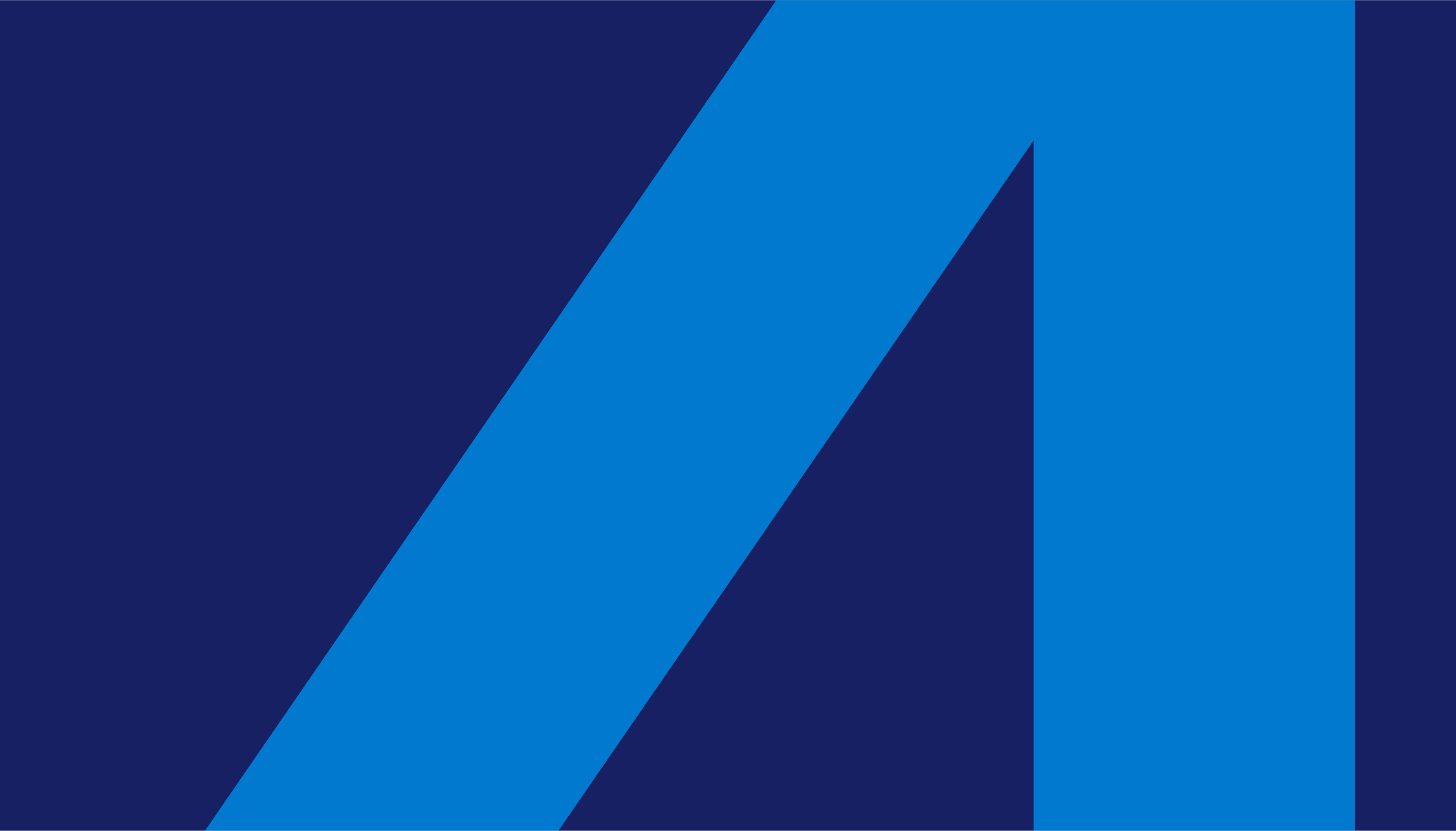
Fighting corruption in education in fragile states

Teachers and Taxis: Corruption in the education sector in Honduras
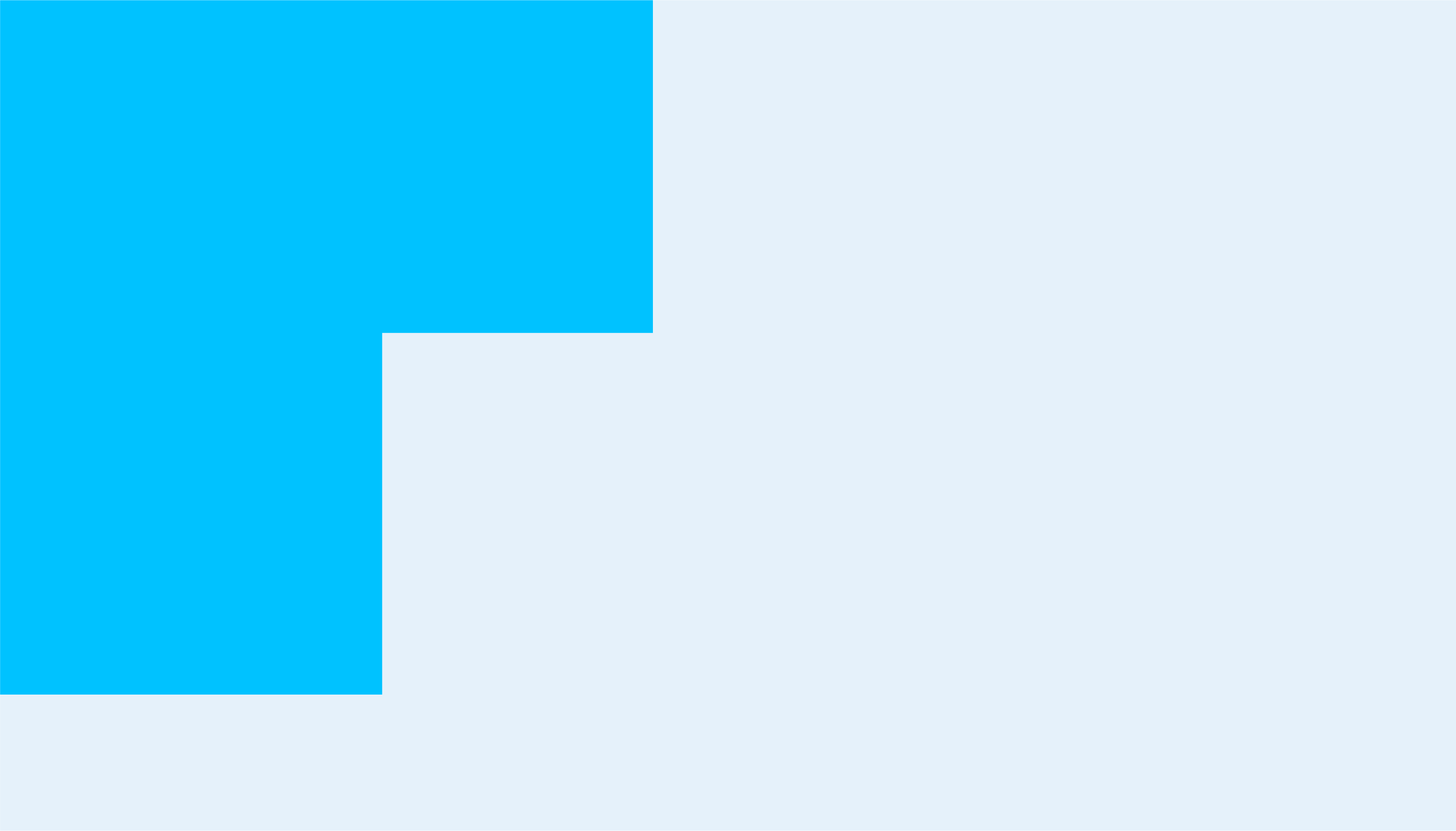
Corruption free education: Lessons from a state and civil society joint initiative in Peru
GAB | The Global Anticorruption Blog
Law, social science, and policy, making anticorruption education work: the to do list.
In a previous post , I discussed how in Indonesia, entrenched cultural norms make corruption hard to eradicate, and I argued that because of this anticorruption reformers should promote educational curricula–at the elementary, junior high school, and high school levels–as a long-term mechanism to change the corruption culture. While my earlier post focused on Indonesia, many other countries–such as the Philippines , India , China , and others–are also beset by an entrenched culture of corruption. These countries, therefore, should also adopt anticorruption education initiatives to help change this culture.
But what goes into the design of effective anticorruption education programs? What factors must be considered? How can we ensure that anticorruption education is genuinely effective? While the issues are complex and many are country-specific, I want to highlight six important components of a successful anticorruption education program.
- First , prior to implementing an anticorruption curricula in schools, countries need to establish a legal basis to compel schools to ensure these curricula are effectively implemented. Because implementing new anticorruption curricula would require schools to incur additional cost, time, and energy, many schools will be reluctant to do so absent legal compulsion (for example, a threat to revoke a school’s education license if it has failed to implement the program within a specific period of time).
- Second , anticorruption education should be embedded in the school’s curricula, not just in the form of a special seminar series or ad hoc trainings. The objective of anticorruption education is to raise a generation of citizens who despise rather than tolerate or embrace corruption, thus reducing the likelihood that corruption will remain embedded in the culture. Because school is a place where children spend most of their time, it serves as an effective medium for social acculturation at the earliest stage. But to be effective, anticorruption messages must be integrated throughout the curriculum, starting from the elementary school level.
- Third, the government must conduct careful research prior to the implementation of the curricula, drawing on the expertise of education psychologists and other experts, to find out the most effective way to inculcate anticorruption norms. This includes figuring out the best way to target anticorruption education at children in different age groups, so that the material will not be presented in a way that is too early or too late, too fast or too slow. Countries could learn from the Republic of Macedonia’s established programs, teacher’s manuals, and promotional materials to implement anticorruption education for their elementary school students. If necessary, each province or state could tailor its curricula to the circumstances of each area.
- Fourth , the government also needs to prepare education for schoolteachers in order to ensure their capability in implementing the anticorruption curricula. This step is vital because the success of the program will depend on the ability of teachers to the deliver the curricula to students.
- Fifth , the government must devote sufficient attention to issues of measurement and evaluation, so it can determine how well the programs are working, and adjust them if they are not effective. The students, for example, should be regularly assessed, using similar tests and techniques employed to gauge student mastery in “regular” subjects like math and history. To monitor the overall impact of the program, the government could also adopt the evaluation models used by Transparency International (TI) in its Corruption Perception Index (CPI), using a combination of surveys and assessments of corruption, collected by a variety of reputable institutions within a country. To date, TI’s CPI is the most widely used corruption indicator worldwide. Although some have raised questions and criticisms about its uses, including on this blog , measuring the success of the program is difficult, and countries need to start somewhere. Additionally, in designing assessment and evaluation schemes, countries need to set feasible targets, neither too high nor too low.
- Sixth , because nothing can more thoroughly undercut the effectiveness of anticorruption messages than corruption within the school–when sends the message that the curriculum is a hypocritical joke–the government should punish the perpetrators of corruption in schools severely, especially if the perpetrators are teachers.
If a solid foundation can be established, then anticorruption education can be one of the most consistent and effective ways to produce a new generation of anticorruption citizens who will demolish the pro-corruption culture.
Share this:
8 thoughts on “ making anticorruption education work: the to do list ”.
I’m happy to see you’ve built on your previous post, Shinta, because I think education is a particularly important area for anticorruption initiatives. I got a bit hung up on the first component, though. Creating a legal basis to compel schools to act on anticorruption reform seems like a very big ask. I wonder if the political capital isn’t better spent on holding schools accountable for the more traditional aims of education (such as achieving certain student and teacher performance standards), which are often in need of improvement. Perhaps my hesitation comes from the fact that I live in the U.S., where the relationship between state-level actors – education service providers and policymakers – and their federal-level counterparts – mostly policymakers and enforcement bodies – is fraught with tension. Maybe the controversy over enforcement of standards would not be so great in a unitary state like Indonesia.
At any rate, one way to overcome this potential obstacle is to develop an integrated curriculum, whereby anticorruption principles are introduced into standard curricular subjects, rather than as a stand-alone topic (for example, instead of having a unit on anticorruption, require students to practice accounting in math or read books about integrity in language arts). I don’t know much about pedagogical models but it seems like, independent of the political feasibility, this approach might be a good one, particularly for younger learners.
I like your idea, Liz, of integrating anticorruption curriculum into a broad range of subject areas because it normalizes the idea that corruption can rear its head in diverse settings and so develops students’ ability to recognize corruption regardless of the form it takes. M concern would be how to reconcile the idea of an integrated curriculum in which, presumably, all or most teachers would be required to incorporate anticorruption lessons, with the fact that corruption is endemic and (presumably) a good segment of teachers and school administrators may be actors. I think we’d pretty quickly run into the concern Shinta highlights in her 6th point. These tendencies could of course be checked by the monitoring and evaluation program Shinta recommends, but my inclination would be to parachute anticorruption instructors into schools were corruption is rife, both for students and teachers, as a means of first and foremost preserving the integrity of the anticorruption program. Doing so would certainly be more resource intensive, but this could also work to the program’s benefit. If, for example, an incentive system were set up whereby schools would have two years to demonstrate themselves capable of taking over the anticorruption programming, and if they could not they would have to take over funding responsibilities, local teachers and administrators would have a real interest in seeing the program succeed. Once the program is entrenched enough to successfully inculcate anticorruption values, incorporating these lessons into a broad range of subjects is a great idea.
I’m also glad to see you build on your ideas, Shinta, since I’ve been wondering what all these calls for anti-corruption education would actually look like in practice. I too am somewhat worried about how effective it’s going to be, though, and, as Liz said, whether the political capital wouldn’t be better spent elsewhere, at least in pure cost-benefit terms for education. Also, if a new legal duty was created, there would have to be additional funding provided, right? I suppose that’s where your third point comes in (as well as the fifth, going forward)–it seems likely to be very difficult to persuade governments to spend money on this (which necessarily requires taking it from somewhere else), so it would be particularly important to make sure whatever measures taken were actually effective.
I’d also echo Mel’s thoughts that Liz’s ideas about integration seem like a way to at least somewhat overcome the likely requirement of additional resources.
Maybe this already exists, but a post beginning to do the sort of survey you discuss in your third point would be really great to read–especially since I still remain a little skeptical about how well all of this can work (but would very much hope to be convinced in the other direction!).
I’d also like to echo Mel’s point about the importance of fighting corruption within educational institutions themselves, as an essential prerequisite to effective anticorruption education at any level. As I said in my own earlier post on the Poznan Declaration ( https://globalanticorruptionblog.com/2015/03/17/can-universities-teach-people-not-to-be-corrupt-reflections-on-the-poznan-declaration/ ), I think this deserves to be at the top of the list, rather than the bottom (though I fully recognize that the order of the items on your list was not meant to convey relative importance).
I was not nearly as hung up on the first element of Shinta’s outline, in large part because mandating that an anticorruption program be incorporated into elementary and secondary curriculum would be no different than compelling schools to teach math and science; if you can do the latter, you can do the former. I think Shinta is just making the worthwhile point that, for this important anticorruption socialization process to work, we need to obligate schools to embrace this new curriculum; it should not be phrased as an aspirational goal or optional program because schools might then shy away from taking on additional responsibilities and costs.
I think I lean pretty strongly toward Shinta’s camp that the only effective way to combat a culture of corruption is to teach the next generation while they’re young. But I share some of the broader concerns that placing the responsibility on schools to squeeze this additional program into existing hours/budgets comes at a nonnegligible cost to the schools’ other missions, objectives, and programs. I also agree both Shinta and some of the comments that the real crucial element of this entire endeavor will be in figuring out how to teach anticorruption norms effectively so that they have lasting impact. Fascinating idea that will likely be very difficult in practice.
Liz, I really like your idea about the integrated curriculum. However, echoing Melanie, I think in practice it’s going to be much more difficult to reconcile the integrated curriculum. Not only because most countries are (presumably) struggling with endemic corruption within the school system, but also because it means teachers must dissect the already established “normal” subjects to fit the anti-corruption elements. I wonder: what if the anti-corruption curriculum is later proven to be ineffective? Will teachers must once again dissect the integrated curriculum hence hampering and destabilize the learning process of such “normal” curriculum for students? Would it not be more practicable to implement a separated set of anti-corruption curricula, test it, and later modify it if the initial set is not working? But, this is just my immediate reaction. More thorough research is surely needed—education experts may also find out that different areas and circumstances need different models.
On another note, I honestly believe—especially in developing countries that are rife with corruption—schools will (most likely) not voluntarily implement anti-corruption program unless they are compelled to do so through strict regulation. As Jordan mentioned, if the government can do this with math or history, why not with the anti-corruption program? I agree that it may create tensions and controversy but the first step should be to make the program a reality—by making it an obligation for schools and see how the people/CSOs react to it. In practice, they are the one who can ensure the sustainability of the anti-corruption program.
I think you have missed a very critical factor…. they way it is taught. If it isn’t fairly interactive I suspect it is mostly wasted. This is particularly important if values are more caught than taught. See this fairly dated article http://www.pdfpage.com/file/116N/approaches-to-civic-education-lessons-learned.html
and Dr. Steven Finkels work http://onlinelibrary.wiley.com/doi/10.1002/pad.1678/pdf
Thanks, this is very helpful. I wonder, though, if this additional point doesn’t raise another difficulty. The kind of interactive education I think you have in mind demands very skilled, committed teachers, different kinds of curricula, etc. At least in the short-to-medium term, it may not be realistic to expect that large, poor countries like Indonesia (or China or India or other countries where we might think anticorruption education is badly needed) will be able to implement such a dramatic curricular innovation on a large scale. Maybe that pessimistic assessment is not right, but suppose it is.
The question, then, is whether it is better to implement an admittedly imperfect anticorruption curricula (non-interactive, etc.), or whether that is, as you suggest, mostly a waste of time and resources. For some subjects, like math, my instinct is to say that it’s better for it to be taught badly (via lecture and rote memorization) than not at all. But maybe when one is teaching values rather than skills, this is not true — maybe better not to try to implement sweeping anticorruption education curricula until we’ve first built up the capacity to do it the right way? Or maybe we need to introduce in incrementally, starting where the capacity is already there and building out?
Leave a comment Cancel reply
This site uses Akismet to reduce spam. Learn how your comment data is processed .

- Already have a WordPress.com account? Log in now.
- Subscribe Subscribed
- Copy shortlink
- Report this content
- View post in Reader
- Manage subscriptions
- Collapse this bar
70 Years After ‘Brown,’ Schools Are Still Separate and Unequal

- Share article
Fully seven decades after the U.S. Supreme Court decided Brown v. Board of Education , Black students and their schools remain functionally separate and unequal.
Pre- Brown de jure segregation has been replaced by today’s de facto with more than a third of students attending schools where the students are predominantly their own race or ethnicity.
According to an analysis by EdBuild, school districts mostly attended by Black and brown students got $23 billion less in state and local funding than majority-white districts in the 2015-16 school year.
Schools attended primarily by Black and brown students are overwhelmingly high poverty. Our schools generally have fewer advanced course offerings and extracurriculars. And, critically, too many of our schools have less experienced educators and a dearth of Black and brown teachers.
Seventy years later, looking back on why and how we collectively arrived here is important. One relevant and vital observation is that civil rights leaders’ desire for school integration —for access to better-funded schools—was not driven by a wish to escape Black teachers. Black and brown families valued the support and care provided by Black educators.
Their struggle was not against the presence of Black teachers but against the systemic injustices that relegated them to underresourced and neglected educational institutions. At times, well-resourced schools were mere steps away from Black families’ homes, but because Black students were barred from them, they might have had to go miles to the designated school for Black children.
The decision to prioritize integration over resource allocation was not without its detractors within Black leadership circles. Some leaders argued that the NAACP should sue for equal funding , contending that more resources for segregated schools could have yielded greater dividends in terms of educational equity. But Thurgood Marshall’s legal strategy that concluded with Brown instead focused on achieving desegregation.
The unforeseen consequence of integration was the loss of Black teachers en masse, turning integration into a one-way street. Had integration been a two-way process, with white students attending predominantly Black schools, resources might have flowed into these institutions, bolstering their capacity to provide high-quality education. Instead, white flight and the exodus of white students from integrated schools drained resources from those schools and exacerbated the practical inequality faced by Black and brown students.
The Black teachers lost in the integration shuffle never returned. Today, less than 7 percent of teachers identify as Black. In my home state of Pennsylvania, more than half our schools had no teachers of color in the 2016-17 school year— zero!
The dearth of Black and brown teachers has materially negative impacts on all students. There is now conclusive evidence on the positive impacts of having more Black and brown teachers in the classroom. Research shows that Black male students who have had a Black teacher have reduced dropout rates, fewer disciplinary issues, more positive views of schooling, and better test scores. Even one teacher can make a difference.
For better (and worse) Brown v. Board of Education continues to shape our modern education system today. Disregard for Black and brown pedagogical frameworks and educational practices that foster a positive racial identity of students of color pervades schools and districts from coast to coast. Schools of education are struggling to adequately prepare aspiring teachers to effectively serve students of color , but they simply do not produce enough Black and brown teachers to make up for that deficiency.
Historically Black colleges and universities, which produce about half of all Black teachers, and other minority-serving institutions on the whole, are doing incredible work in this area. They’re graduating higher percentages of their enrollees and get higher marks for the quality of those teachers that they launch into the field compared with other teacher preparation programs.
However, too many of our minority-serving institutions operate on a knife’s edge financially —with lagging public financial backing and comparatively small endowments to advance their work.
So 70 years post- Brown , the state of Black and brown education is not anywhere close to the vision that Thurgood Marshall likely held as he fought the good fight. If we want to achieve that vision—one where Black and brown children are afforded the same high-quality education that their white peers are now more likely to receive—it’s well past time to provide the resources the schools of Black and brown communities need. We must support also the institutions that are at the vanguard of providing the educators that are key to their success.
Only through concerted efforts to rectify historical injustices and invest in the educational futures of all students can we truly honor the noble intentions, if not true legacy, of Brown .
Sign Up for The Savvy Principal
Edweek top school jobs.

Sign Up & Sign In


30,000+ students realised their study abroad dream with us. Take the first step today
Meet top uk universities from the comfort of your home, here’s your new year gift, one app for all your, study abroad needs, start your journey, track your progress, grow with the community and so much more.

Verification Code
An OTP has been sent to your registered mobile no. Please verify

Thanks for your comment !
Our team will review it before it's shown to our readers.

- Speech Writing /
Speech on Corruption in Business and Corporate Practices in English

- Updated on
- May 25, 2024

This page will discuss a speech on Corruption in Business and Corporate Practices for school students. Corruption is like the plague, it can cripple economies and severely affect everyone in society. It does not have any borders or limitations. The greed for money and power gives rise to corruption, and very soon, it disturbs the smooth functioning of society. Check out this speech on corruption in business and corporate practices.
3 Minute Speech on Corruption in Business and Corruption Practices
Quick Read: Elections in India Essay in 500 Words
Paragraph on Corruption in Business and Corruption Practices
Quick Read: Media and Corruption: Short and Long Speech
A.1 Good morning, respected teachers and dear friends. Corruption in business is like the plague, it can cripple economies and severely affect everyone in society. It is an unethical and immoral practice that erodes social trust and distorts markets. When a person becomes greedy and seeks power and money, he or she turns to unethical and illegal means. The Corruption Perception Index 2023 ranked India at 93rd position, with only 39 points.
A.2 A conclusion should include a clear review of the main points of the speech. The purpose is to remind the audience of the main ideas that were covered in the speech.
A.3 Speech delivery practice: Stand tall—do not hold or lean on the podium. Come out from behind the podium during the speech. Makes an impact, especially after the speech. Use gestures. Be sure gestures can be seen. Make eye contact. It is easy with a podium to look down especially if you have notes or outlines.
Similar Speech Topics
For more information on such interesting speech topics for your school, visit our speech writing page and follow Leverage Edu .
Aayushi Vardhan
Leave a Reply Cancel reply
Save my name, email, and website in this browser for the next time I comment.
Contact no. *

Connect With Us

30,000+ students realised their study abroad dream with us. Take the first step today.

Resend OTP in

Need help with?
Study abroad.
UK, Canada, US & More
IELTS, GRE, GMAT & More
Scholarship, Loans & Forex
Country Preference
New Zealand
Which English test are you planning to take?
Which academic test are you planning to take.
Not Sure yet
When are you planning to take the exam?
Already booked my exam slot
Within 2 Months
Want to learn about the test
Which Degree do you wish to pursue?
When do you want to start studying abroad.
January 2024
September 2024
What is your budget to study abroad?

How would you describe this article ?
Please rate this article
We would like to hear more.
Have something on your mind?

Make your study abroad dream a reality in January 2022 with
India's Biggest Virtual University Fair

Essex Direct Admission Day
Why attend .

Don't Miss Out

An official website of the United States government
Here's how you know
The .gov means it’s official. Federal government websites often end in .gov or .mil. Before sharing sensitive information, make sure you’re on a federal government site.
The site is secure. A lock ( ) or https:// ensures that you are connecting to the official website and that any information you provide is encrypted and transmitted securely.
Keyboard Navigation
- Agriculture and Food Security
- Anti-Corruption
- Conflict Prevention and Stabilization
- Democracy, Human Rights, and Governance
- Economic Growth and Trade
- Environment, Energy, and Infrastructure
- Gender Equality and Women's Empowerment
- Global Health
- Humanitarian Assistance
- Innovation, Technology, and Research
- Water and Sanitation
- Burkina Faso
- Central Africa Regional
- Central African Republic
- Côte d’Ivoire
- Democratic Republic of the Congo
- East Africa Regional
- Power Africa
- Republic of the Congo
- Sahel Regional
- Sierra Leone
- South Africa
- South Sudan
- Southern Africa Regional
- West Africa Regional
- Afghanistan
- Central Asia Regional
- Indo-Pacific
- Kyrgyz Republic
- Pacific Islands
- Philippines
- Regional Development Mission for Asia
- Timor-Leste
- Turkmenistan
- Bosnia and Herzegovina
- North Macedonia
- Central America and Mexico Regional Program
- Dominican Republic
- Eastern and Southern Caribbean
- El Salvador
- Middle East Regional Platform
- West Bank and Gaza
- Dollars to Results
- Data Resources
- Strategy & Planning
- Budget & Spending
- Performance and Financial Reporting
- FY 2023 Agency Financial Report
- Records and Reports
- Budget Justification
- Our Commitment to Transparency
- Policy and Strategy
- How to Work with USAID
- Find a Funding Opportunity
- Organizations That Work With USAID
- Resources for Partners
- Get involved
- Business Forecast
- Safeguarding and Compliance
- Diversity, Equity, Inclusion, and Accessibility
- Mission, Vision and Values
- News & Information
- Operational Policy (ADS)
- Organization
- Stay Connected
- USAID History
- Video Library
- Coordinators
- Nondiscrimination Notice and Civil Rights
- Collective Bargaining Agreements
- Disabilities Employment Program
- Federal Employee Viewpoint Survey
- Reasonable Accommodations
- Urgent Hiring Needs
- Vacancy Announcements
- Search Search Search
USAID Homepage
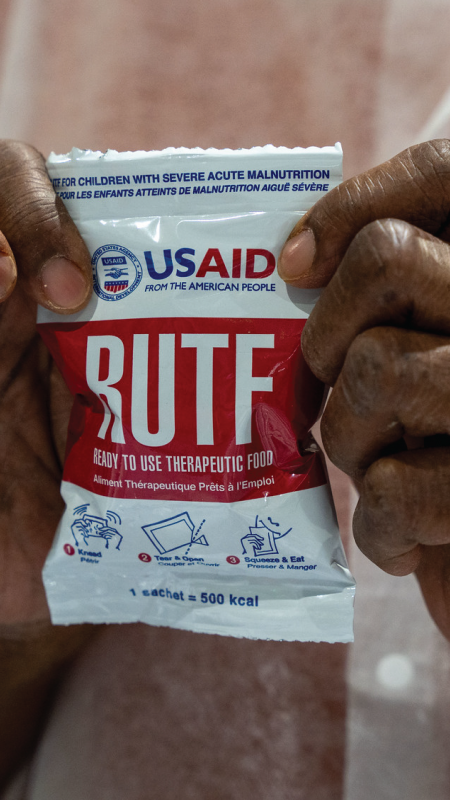
USAID Announced $200M for RUTF to help millions of children facing malnutrition
USAID is the world's premier international development agency and a catalytic actor driving development results. USAID's work advances U.S. national security and economic prosperity, demonstrates American generosity, and promotes a path to recipient self-reliance and resilience.
Latest from usaid, the united states announces additional humanitarian assistance for the people of malawi impacted by el niño.
- May 28, 2024 | Press Release
The United States Announces Nearly $176 Million in Additional Humanitarian Assistance for West Africa
Administrator samantha power on additional humanitarian assistance for the people of syria.
- May 27, 2024 | Speech
Press Briefing to Update on the Humanitarian Maritime Corridor in Gaza
- May 24, 2024 | Speech
Administrator Samantha Power Introduces Kenyan President William Ruto During A Keynote Speech
- May 23, 2024 | Speech
Deputy Administrator Isobel Coleman Meets with International Rescue Committee CEO and President David Miliband
- May 23, 2024 | Readout
In Visit to Morocco, Administrator Samantha Power Announces New Initiatives for Morocco
- May 22, 2024 | Press Release

Administrator Samantha Power at a Press Conference
- May 22, 2024 | Speech
Administrator Samantha Power in Morocco
- May 22, 2024 | Readout
The United States Announces New Partnership with Kenya to Support STEM Education
- May 21, 2024 | Press Release
Administrator Samantha Power at a Press Gaggle Following a Youth Soccer Match in Morocco
- May 21, 2024 | Speech
Administrator Samantha Power Visits Rabat, Morocco
- May 21, 2024 | Readout
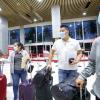
A Voyage of Opportunities
The U.S. Government’s H-2 visa program came along at just the right time for Balmore.
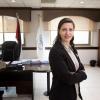
Jordan’s First Female Power Executive
USAID’s Engendering Industries program supports partner Reem Hamdan to become the first woman power executive in Jordan’s history

How Licensing Charcoal From Tree Plantations Curbs Deforestation
USAID supports commercial solutions that protect Malawi’s forests and fuel economic growth
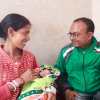
Delivering Quality
How USAID’s partnership with the Government of India transformed labor and delivery rooms for safer childbirth

Producing Food in Wartime
A Ukrainian company exports food and creates jobs in the face of Putin's brutal invasion
Administrator Samantha Power on World Malaria Day 2024
Administrator Samantha Power on Earth Day 2024
Leading issues.

Administrator Power Travels to Morocco
Check out the latest updates from the trip.

Food Security
Addressing the global hunger crisis caused by COVID-19, climate change, and Russian Federation's war on Ukraine while building resilient and sustainable food systems.

Ukraine Response
Supporting Ukraine in the face of Putin's unprovoked war with humanitarian, development and economic support.
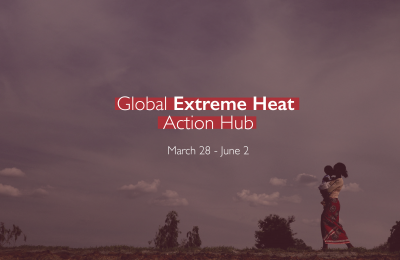
Global Extreme Heat Action Hub
The Global Sprint of Action on Extreme Heat will raise awareness and spur commitments around extreme heat, beginning on March 28, 2024 at the virtual Summit through Earth Day and culminating with the Global Day of Action on Extreme Heat on June 2, 2024.
Sign up for our Newsletter
To sign up for updates or to access your subscriber preferences, please enter your contact information below.
Featured Focus Areas
Promoting global health, supporting global stability, providing humanitarian assistance, catalyzing innovation and partnership, advancing gender equality, partner with usaid.
Access WorkwithUSAID.gov in Spanish, French, and Arabic WorkwithUSAID.gov is now available in Spanish, French, and Arabic! Click on "English" in the top right corner to change languages. By providing access to important and informative content in other languages, we aim to provide local organizations in partner countries with an orientation to USAID and the partnership process. WorkwithUSAID.gov is a great place to learn about USAID, and now Spanish-, French-, and Arabic-speaking partners can benefit from the knowledge and tools contained on the platform. In addition to the website translations, WorkwithUSAID.gov hosts more than 150 resource documents in eight languages—Arabic, Burmese, French, Portuguese, Spanish, Swahili, Ukrainian, and Vietnamese.

Rosen, Lankford press education secretary to designate official to oversee antisemitism investigations

Pretoria politics
South africa’s israel-’obsessed’ anc poised to lose majority for first time since end of apartheid.

Kirby's clarification
White house stands by support for israel amid deadly rafah incident.
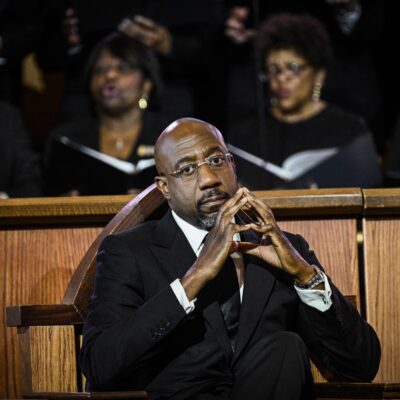
Warnock declines to criticize alma mater’s decision to divest from Israel

TWITCH PITCH
Ocasio-cortez agrees as twitch streamer blames abraham accords for oct. 7 attack.

Daily Kickoff
Daily kickoff: inside the goldberg-polins’ whirlwind trip to washington.
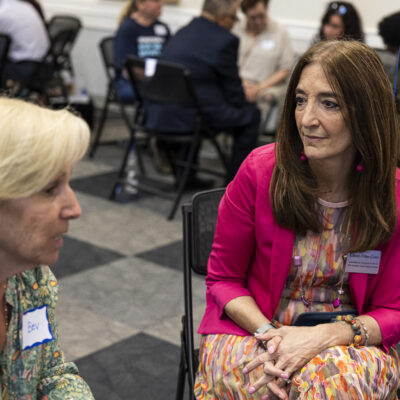
BATTLEGROUND VIRGINIA
Three contenders emerging in democratic primary to succeed rep. jennifer wexton.

BIBI-SITTING
Democrats divided over johnson’s netanyahu invite.

CALLING OUT EXTREMES
Deborah lipstadt’s horseshoe theory of antisemitism.

Daily Kickoff: Johnson announces Bibi invite at Israeli Embassy gathering
The lawmakers also said that the department must hold schools ‘accountable using every available tool, up to and including withholding federal funding’

U.S. Senate
Sens. Jacky Rosen (D-NV) and James Lankford (R-OK)
Responding to the deluge of new investigations into antisemitism on college campuses since Oct. 7 and the subsequent war in Gaza, Sens. Jacky Rosen (D-NV) and James Lankford (R-OK) wrote to Education Secretary Miguel Cardona on Monday to call on him to appoint a dedicated official to oversee the Department of Education’s efforts to fight antisemitism.
The lawmakers also said that the department must hold schools “accountable using every
available tool, up to and including withholding federal funding” when they fail to protect Jewish students as “too many” have.
“Far more work needs to be done to hold schools accountable for their failure to protect Jewish students on college campuses, including by swiftly resolving pending investigations related to antisemitism,” they continued.
Rosen and Lankford said Cardona should “designate a senior official with the responsibility of overseeing the Department’s efforts to counter antisemitic discrimination in higher education,” in consultation with the Senate and House antisemitism task forces. Rosen and Lankford lead the Senate task force.
They said the official’s responsibilities should include informing students about how they can file complaints, communicating with schools about their duties to protect students who are perceived to be Jewish or Israeli from discrimination and making policy recommendations to Cardona.
A similar structure is part of the Countering Antisemitism Act , a bill led in the Senate by Rosen and Lankford, which would also implement various other mechanisms to combat antisemitism across the federal government. It’s not clear when or if that bill will move forward given political headwinds .
The senators also asked Cardona to provide a report and briefing to Congress on the status of the department’s investigations into antisemitism, with a focus on the number of complaints that have been pending for over six months, why such complaints are still unresolved and when the department expects to resolve them.
Cardona has said that the Department of Education’s Office of Civil Rights has been severely overstretched since Oct. 7, given the rise in complaints of antisemitism and other forms of discrimination, with investigators handling 50 cases each.
Subscribe now to the Daily Kickoff
The politics and business news you need to stay up to date, delivered each morning in a must-read newsletter.
Subscribe to Our Newsletters to Access
Enter your email to gain access to our exclusive content
Doha Declaration
Education for justice.
- Agenda Day 1
- Agenda Day 2
- Agenda Day 3
- Agenda Day 4
- Registration
- Breakout Sessions for Primary and Secondary Level
- Breakout Sessions for Tertiary Level
- E4J Youth Competition
- India - Lockdown Learners
- Chuka, Break the Silence
- The Online Zoo
- I would like a community where ...
- Staying safe online
- Let's be respectful online
- We can all be heroes
- Respect for all
- We all have rights
- A mosaic of differences
- The right thing to do
- Solving ethical dilemmas
- UNODC-UNESCO Guide for Policymakers
- UNODC-UNESCO Handbooks for Teachers
- Justice Accelerators
- Introduction
- Organized Crime
- Trafficking in Persons & Smuggling of Migrants
- Crime Prevention & Criminal Justice Reform
- Crime Prevention, Criminal Justice & SDGs
- UN Congress on Crime Prevention & Criminal Justice
- Commission on Crime Prevention & Criminal Justice
- Conference of the Parties to UNTOC
- Conference of the States Parties to UNCAC
- Rules for Simulating Crime Prevention & Criminal Justice Bodies
- Crime Prevention & Criminal Justice
- Engage with Us
- Contact Us about MUN
- Conferences Supporting E4J
- Cyberstrike
- Play for Integrity
- Running out of Time
- Zorbs Reloaded
- Developing a Rationale for Using the Video
- Previewing the Anti-Corruption Video
- Viewing the Video with a Purpose
- Post-viewing Activities
- Previewing the Firearms Video
- Rationale for Using the Video
- Previewing the Human Trafficking Video
- Previewing the Organized Crime Video
- Previewing the Video
- Criminal Justice & Crime Prevention
- Corruption & Integrity
- Human Trafficking & Migrant Smuggling
- Firearms Trafficking
- Terrorism & Violent Extremism
- Introduction & Learning Outcomes
- Corruption - Baseline Definition
- Effects of Corruption
- Deeper Meanings of Corruption
- Measuring Corruption
- Possible Class Structure
- Core Reading
- Advanced Reading
- Student Assessment
- Additional Teaching Tools
- Guidelines for Stand-Alone Course
- Appendix: How Corruption Affects the SDGs
- What is Governance?
- What is Good Governance?
- Corruption and Bad Governance
- Governance Reforms and Anti-Corruption
- Guidelines for Stand-alone Course
- Corruption and Democracy
- Corruption and Authoritarian Systems
- Hybrid Systems and Syndromes of Corruption
- The Deep Democratization Approach
- Political Parties and Political Finance
- Political Institution-building as a Means to Counter Corruption
- Manifestations and Consequences of Public Sector Corruption
- Causes of Public Sector Corruption
- Theories that Explain Corruption
- Corruption in Public Procurement
- Corruption in State-Owned Enterprises
- Responses to Public Sector Corruption
- Preventing Public Sector Corruption
- Forms & Manifestations of Private Sector Corruption
- Consequences of Private Sector Corruption
- Causes of Private Sector Corruption
- Responses to Private Sector Corruption
- Preventing Private Sector Corruption
- Collective Action & Public-Private Partnerships against Corruption
- Transparency as a Precondition
- Detection Mechanisms - Auditing and Reporting
- Whistle-blowing Systems and Protections
- Investigation of Corruption
- Introduction and Learning Outcomes
- Brief background on the human rights system
- Overview of the corruption-human rights nexus
- Impact of corruption on specific human rights
- Approaches to assessing the corruption-human rights nexus
- Human-rights based approach
- Defining sex, gender and gender mainstreaming
- Gender differences in corruption
- Theories explaining the gender–corruption nexus
- Gendered impacts of corruption
- Anti-corruption and gender mainstreaming
- Manifestations of corruption in education
- Costs of corruption in education
Causes of corruption in education
- Fighting corruption in education
- Core terms and concepts
- The role of citizens in fighting corruption
- The role, risks and challenges of CSOs fighting corruption
- The role of the media in fighting corruption
- Access to information: a condition for citizen participation
- ICT as a tool for citizen participation in anti-corruption efforts
- Government obligations to ensure citizen participation in anti-corruption efforts
- Teaching Guide
- Brief History of Terrorism
- 19th Century Terrorism
- League of Nations & Terrorism
- United Nations & Terrorism
- Terrorist Victimization
- Exercises & Case Studies
- Radicalization & Violent Extremism
- Preventing & Countering Violent Extremism
- Drivers of Violent Extremism
- International Approaches to PVE &CVE
- Regional & Multilateral Approaches
- Defining Rule of Law
- UN Global Counter-Terrorism Strategy
- International Cooperation & UN CT Strategy
- Legal Sources & UN CT Strategy
- Regional & National Approaches
- International Legal Frameworks
- International Human Rights Law
- International Humanitarian Law
- International Refugee Law
- Current Challenges to International Legal Framework
- Defining Terrorism
- Criminal Justice Responses
- Treaty-based Crimes of Terrorism
- Core International Crimes
- International Courts and Tribunals
- African Region
- Inter-American Region
- Asian Region
- European Region
- Middle East & Gulf Regions
- Core Principles of IHL
- Categorization of Armed Conflict
- Classification of Persons
- IHL, Terrorism & Counter-Terrorism
- Relationship between IHL & intern. human rights law
- Limitations Permitted by Human Rights Law
- Derogation during Public Emergency
- Examples of States of Emergency & Derogations
- International Human Rights Instruments
- Regional Human Rights Instruments
- Extra-territorial Application of Right to Life
- Arbitrary Deprivation of Life
- Death Penalty
- Enforced Disappearances
- Armed Conflict Context
- International Covenant on Civil and Political Rights
- Convention against Torture et al.
- International Legal Framework
- Key Contemporary Issues
- Investigative Phase
- Trial & Sentencing Phase
- Armed Conflict
- Case Studies
- Special Investigative Techniques
- Surveillance & Interception of Communications
- Privacy & Intelligence Gathering in Armed Conflict
- Accountability & Oversight of Intelligence Gathering
- Principle of Non-Discrimination
- Freedom of Religion
- Freedom of Expression
- Freedom of Assembly
- Freedom of Association
- Fundamental Freedoms
- Definition of 'Victim'
- Effects of Terrorism
- Access to Justice
- Recognition of the Victim
- Human Rights Instruments
- Criminal Justice Mechanisms
- Instruments for Victims of Terrorism
- National Approaches
- Key Challenges in Securing Reparation
- Topic 1. Contemporary issues relating to conditions conducive both to the spread of terrorism and the rule of law
- Topic 2. Contemporary issues relating to the right to life
- Topic 3. Contemporary issues relating to foreign terrorist fighters
- Topic 4. Contemporary issues relating to non-discrimination and fundamental freedoms
- Module 16: Linkages between Organized Crime and Terrorism
- Thematic Areas
- Content Breakdown
- Module Adaptation & Design Guidelines
- Teaching Methods
- Acknowledgements
- 1. Introducing United Nations Standards & Norms on CPCJ vis-à-vis International Law
- 2. Scope of United Nations Standards & Norms on CPCJ
- 3. United Nations Standards & Norms on CPCJ in Operation
- 1. Definition of Crime Prevention
- 2. Key Crime Prevention Typologies
- 2. (cont.) Tonry & Farrington’s Typology
- 3. Crime Problem-Solving Approaches
- 4. What Works
- United Nations Entities
- Regional Crime Prevention Councils/Institutions
- Key Clearinghouses
- Systematic Reviews
- 1. Introduction to International Standards & Norms
- 2. Identifying the Need for Legal Aid
- 3. Key Components of the Right of Access to Legal Aid
- 4. Access to Legal Aid for Those with Specific Needs
- 5. Models for Governing, Administering and Funding Legal Aid
- 6. Models for Delivering Legal Aid Services
- 7. Roles and Responsibilities of Legal Aid Providers
- 8. Quality Assurance and Legal Aid Services
- 1. Context for Use of Force by Law Enforcement Officials
- 2. Legal Framework
- 3. General Principles of Use of Force in Law Enforcement
- 4. Use of Firearms
- 5. Use of “Less-Lethal” Weapons
- 6. Protection of Especially Vulnerable Groups
- 7. Use of Force during Assemblies
- 1. Policing in democracies & need for accountability, integrity, oversight
- 2. Key mechanisms & actors in police accountability, oversight
- 3. Crosscutting & contemporary issues in police accountability
- 1. Introducing Aims of Punishment, Imprisonment & Prison Reform
- 2. Current Trends, Challenges & Human Rights
- 3. Towards Humane Prisons & Alternative Sanctions
- 1. Aims and Significance of Alternatives to Imprisonment
- 2. Justifying Punishment in the Community
- 3. Pretrial Alternatives
- 4. Post Trial Alternatives
- 5. Evaluating Alternatives
- 1. Concept, Values and Origin of Restorative Justice
- 2. Overview of Restorative Justice Processes
- 3. How Cost Effective is Restorative Justice?
- 4. Issues in Implementing Restorative Justice
- 1. Gender-Based Discrimination & Women in Conflict with the Law
- 2. Vulnerabilities of Girls in Conflict with the Law
- 3. Discrimination and Violence against LGBTI Individuals
- 4. Gender Diversity in Criminal Justice Workforce
- 1. Ending Violence against Women
- 2. Human Rights Approaches to Violence against Women
- 3. Who Has Rights in this Situation?
- 4. What about the Men?
- 5. Local, Regional & Global Solutions to Violence against Women & Girls
- 1. Understanding the Concept of Victims of Crime
- 2. Impact of Crime, including Trauma
- 3. Right of Victims to Adequate Response to their Needs
- 4. Collecting Victim Data
- 5. Victims and their Participation in Criminal Justice Process
- 6. Victim Services: Institutional and Non-Governmental Organizations
- 7. Outlook on Current Developments Regarding Victims
- 8. Victims of Crime and International Law
- 1. The Many Forms of Violence against Children
- 2. The Impact of Violence on Children
- 3. States' Obligations to Prevent VAC and Protect Child Victims
- 4. Improving the Prevention of Violence against Children
- 5. Improving the Criminal Justice Response to VAC
- 6. Addressing Violence against Children within the Justice System
- 1. The Role of the Justice System
- 2. Convention on the Rights of the Child & International Legal Framework on Children's Rights
- 3. Justice for Children
- 4. Justice for Children in Conflict with the Law
- 5. Realizing Justice for Children
- 1a. Judicial Independence as Fundamental Value of Rule of Law & of Constitutionalism
- 1b. Main Factors Aimed at Securing Judicial Independence
- 2a. Public Prosecutors as ‘Gate Keepers’ of Criminal Justice
- 2b. Institutional and Functional Role of Prosecutors
- 2c. Other Factors Affecting the Role of Prosecutors
- Basics of Computing
- Global Connectivity and Technology Usage Trends
- Cybercrime in Brief
- Cybercrime Trends
- Cybercrime Prevention
- Offences against computer data and systems
- Computer-related offences
- Content-related offences
- The Role of Cybercrime Law
- Harmonization of Laws
- International and Regional Instruments
- International Human Rights and Cybercrime Law
- Digital Evidence
- Digital Forensics
- Standards and Best Practices for Digital Forensics
- Reporting Cybercrime
- Who Conducts Cybercrime Investigations?
- Obstacles to Cybercrime Investigations
- Knowledge Management
- Legal and Ethical Obligations
- Handling of Digital Evidence
- Digital Evidence Admissibility
- Sovereignty and Jurisdiction
- Formal International Cooperation Mechanisms
- Informal International Cooperation Mechanisms
- Data Retention, Preservation and Access
- Challenges Relating to Extraterritorial Evidence
- National Capacity and International Cooperation
- Internet Governance
- Cybersecurity Strategies: Basic Features
- National Cybersecurity Strategies
- International Cooperation on Cybersecurity Matters
- Cybersecurity Posture
- Assets, Vulnerabilities and Threats
- Vulnerability Disclosure
- Cybersecurity Measures and Usability
- Situational Crime Prevention
- Incident Detection, Response, Recovery & Preparedness
- Privacy: What it is and Why it is Important
- Privacy and Security
- Cybercrime that Compromises Privacy
- Data Protection Legislation
- Data Breach Notification Laws
- Enforcement of Privacy and Data Protection Laws
- Intellectual Property: What it is
- Types of Intellectual Property
- Causes for Cyber-Enabled Copyright & Trademark Offences
- Protection & Prevention Efforts
- Online Child Sexual Exploitation and Abuse
- Cyberstalking and Cyberharassment
- Cyberbullying
- Gender-Based Interpersonal Cybercrime
- Interpersonal Cybercrime Prevention
- Cyber Organized Crime: What is it?
- Conceptualizing Organized Crime & Defining Actors Involved
- Criminal Groups Engaging in Cyber Organized Crime
- Cyber Organized Crime Activities
- Preventing & Countering Cyber Organized Crime
- Cyberespionage
- Cyberterrorism
- Cyberwarfare
- Information Warfare, Disinformation & Electoral Fraud
- Responses to Cyberinterventions
- Framing the Issue of Firearms
- Direct Impact of Firearms
- Indirect Impacts of Firearms on States or Communities
- International and National Responses
- Typology and Classification of Firearms
- Common Firearms Types
- 'Other' Types of Firearms
- Parts and Components
- History of the Legitimate Arms Market
- Need for a Legitimate Market
- Key Actors in the Legitimate Market
- Authorized & Unauthorized Arms Transfers
- Illegal Firearms in Social, Cultural & Political Context
- Supply, Demand & Criminal Motivations
- Larger Scale Firearms Trafficking Activities
- Smaller Scale Trafficking Activities
- Sources of Illicit Firearms
- Consequences of Illicit Markets
- International Public Law & Transnational Law
- International Instruments with Global Outreach
- Commonalities, Differences & Complementarity between Global Instruments
- Tools to Support Implementation of Global Instruments
- Other United Nations Processes
- The Sustainable Development Goals
- Multilateral & Regional Instruments
- Scope of National Firearms Regulations
- National Firearms Strategies & Action Plans
- Harmonization of National Legislation with International Firearms Instruments
- Assistance for Development of National Firearms Legislation
- Firearms Trafficking as a Cross-Cutting Element
- Organized Crime and Organized Criminal Groups
- Criminal Gangs
- Terrorist Groups
- Interconnections between Organized Criminal Groups & Terrorist Groups
- Gangs - Organized Crime & Terrorism: An Evolving Continuum
- International Response
- International and National Legal Framework
- Firearms Related Offences
- Role of Law Enforcement
- Firearms as Evidence
- Use of Special Investigative Techniques
- International Cooperation and Information Exchange
- Prosecution and Adjudication of Firearms Trafficking
- Teaching Methods & Principles
- Ethical Learning Environments
- Overview of Modules
- Module Adaption & Design Guidelines
- Table of Exercises
- Basic Terms
- Forms of Gender Discrimination
- Ethics of Care
- Case Studies for Professional Ethics
- Case Studies for Role Morality
- Additional Exercises
- Defining Organized Crime
- Definition in Convention
- Similarities & Differences
- Activities, Organization, Composition
- Thinking Critically Through Fiction
- Excerpts of Legislation
- Research & Independent Study Questions
- Legal Definitions of Organized Crimes
- Criminal Association
- Definitions in the Organized Crime Convention
- Criminal Organizations and Enterprise Laws
- Enabling Offence: Obstruction of Justice
- Drug Trafficking
- Wildlife & Forest Crime
- Counterfeit Products Trafficking
- Falsified Medical Products
- Trafficking in Cultural Property
- Trafficking in Persons
- Case Studies & Exercises
- Extortion Racketeering
- Loansharking
- Links to Corruption
- Bribery versus Extortion
- Money-Laundering
- Liability of Legal Persons
- How much Organized Crime is there?
- Alternative Ways for Measuring
- Measuring Product Markets
- Risk Assessment
- Key Concepts of Risk Assessment
- Risk Assessment of Organized Crime Groups
- Risk Assessment of Product Markets
- Risk Assessment in Practice
- Positivism: Environmental Influences
- Classical: Pain-Pleasure Decisions
- Structural Factors
- Ethical Perspective
- Crime Causes & Facilitating Factors
- Models and Structure
- Hierarchical Model
- Local, Cultural Model
- Enterprise or Business Model
- Groups vs Activities
- Networked Structure
- Jurisdiction
- Investigators of Organized Crime
- Controlled Deliveries
- Physical & Electronic Surveillance
- Undercover Operations
- Financial Analysis
- Use of Informants
- Rights of Victims & Witnesses
- Role of Prosecutors
- Adversarial vs Inquisitorial Legal Systems
- Mitigating Punishment
- Granting Immunity from Prosecution
- Witness Protection
- Aggravating & Mitigating Factors
- Sentencing Options
- Alternatives to Imprisonment
- Death Penalty & Organized Crime
- Backgrounds of Convicted Offenders
- Confiscation
- Confiscation in Practice
- Mutual Legal Assistance (MLA)
- Extradition
- Transfer of Criminal Proceedings
- Transfer of Sentenced Persons
- Module 12: Prevention of Organized Crime
- Adoption of Organized Crime Convention
- Historical Context
- Features of the Convention
- Related international instruments
- Conference of the Parties
- Roles of Participants
- Structure and Flow
- Recommended Topics
- Background Materials
- What is Sex / Gender / Intersectionality?
- Knowledge about Gender in Organized Crime
- Gender and Organized Crime
- Gender and Different Types of Organized Crime
- Definitions and Terminology
- Organized crime and Terrorism - International Legal Framework
- International Terrorism-related Conventions
- UNSC Resolutions on Terrorism
- Organized Crime Convention and its Protocols
- Theoretical Frameworks on Linkages between Organized Crime and Terrorism
- Typologies of Criminal Behaviour Associated with Terrorism
- Terrorism and Drug Trafficking
- Terrorism and Trafficking in Weapons
- Terrorism, Crime and Trafficking in Cultural Property
- Trafficking in Persons and Terrorism
- Intellectual Property Crime and Terrorism
- Kidnapping for Ransom and Terrorism
- Exploitation of Natural Resources and Terrorism
- Review and Assessment Questions
- Research and Independent Study Questions
- Criminalization of Smuggling of Migrants
- UNTOC & the Protocol against Smuggling of Migrants
- Offences under the Protocol
- Financial & Other Material Benefits
- Aggravating Circumstances
- Criminal Liability
- Non-Criminalization of Smuggled Migrants
- Scope of the Protocol
- Humanitarian Exemption
- Migrant Smuggling v. Irregular Migration
- Migrant Smuggling vis-a-vis Other Crime Types
- Other Resources
- Assistance and Protection in the Protocol
- International Human Rights and Refugee Law
- Vulnerable groups
- Positive and Negative Obligations of the State
- Identification of Smuggled Migrants
- Participation in Legal Proceedings
- Role of Non-Governmental Organizations
- Smuggled Migrants & Other Categories of Migrants
- Short-, Mid- and Long-Term Measures
- Criminal Justice Reponse: Scope
- Investigative & Prosecutorial Approaches
- Different Relevant Actors & Their Roles
- Testimonial Evidence
- Financial Investigations
- Non-Governmental Organizations
- ‘Outside the Box’ Methodologies
- Intra- and Inter-Agency Coordination
- Admissibility of Evidence
- International Cooperation
- Exchange of Information
- Non-Criminal Law Relevant to Smuggling of Migrants
- Administrative Approach
- Complementary Activities & Role of Non-criminal Justice Actors
- Macro-Perspective in Addressing Smuggling of Migrants
- Human Security
- International Aid and Cooperation
- Migration & Migrant Smuggling
- Mixed Migration Flows
- Social Politics of Migrant Smuggling
- Vulnerability
- Profile of Smugglers
- Role of Organized Criminal Groups
- Humanitarianism, Security and Migrant Smuggling
- Crime of Trafficking in Persons
- The Issue of Consent
- The Purpose of Exploitation
- The abuse of a position of vulnerability
- Indicators of Trafficking in Persons
- Distinction between Trafficking in Persons and Other Crimes
- Misconceptions Regarding Trafficking in Persons
- Root Causes
- Supply Side Prevention Strategies
- Demand Side Prevention Strategies
- Role of the Media
- Safe Migration Channels
- Crime Prevention Strategies
- Monitoring, Evaluating & Reporting on Effectiveness of Prevention
- Trafficked Persons as Victims
- Protection under the Protocol against Trafficking in Persons
- Broader International Framework
- State Responsibility for Trafficking in Persons
- Identification of Victims
- Principle of Non-Criminalization of Victims
- Criminal Justice Duties Imposed on States
- Role of the Criminal Justice System
- Current Low Levels of Prosecutions and Convictions
- Challenges to an Effective Criminal Justice Response
- Rights of Victims to Justice and Protection
- Potential Strategies to “Turn the Tide”
- State Cooperation with Civil Society
- Civil Society Actors
- The Private Sector
- Comparing SOM and TIP
- Differences and Commonalities
- Vulnerability and Continuum between SOM & TIP
- Labour Exploitation
- Forced Marriage
- Other Examples
- Children on the Move
- Protecting Smuggled and Trafficked Children
- Protection in Practice
- Children Alleged as Having Committed Smuggling or Trafficking Offences
- Basic Terms - Gender and Gender Stereotypes
- International Legal Frameworks and Definitions of TIP and SOM
- Global Overview on TIP and SOM
- Gender and Migration
- Key Debates in the Scholarship on TIP and SOM
- Gender and TIP and SOM Offenders
- Responses to TIP and SOM
- Use of Technology to Facilitate TIP and SOM
- Technology Facilitating Trafficking in Persons
- Technology in Smuggling of Migrants
- Using Technology to Prevent and Combat TIP and SOM
- Privacy and Data Concerns
- Emerging Trends
- Demand and Consumption
- Supply and Demand
- Implications of Wildlife Trafficking
- Legal and Illegal Markets
- Perpetrators and their Networks
- Locations and Activities relating to Wildlife Trafficking
- Environmental Protection & Conservation
- CITES & the International Trade in Endangered Species
- Organized Crime & Corruption
- Animal Welfare
- Criminal Justice Actors and Agencies
- Criminalization of Wildlife Trafficking
- Challenges for Law Enforcement
- Investigation Measures and Detection Methods
- Prosecution and Judiciary
- Wild Flora as the Target of Illegal Trafficking
- Purposes for which Wild Flora is Illegally Targeted
- How is it Done and Who is Involved?
- Consequences of Harms to Wild Flora
- Terminology
- Background: Communities and conservation: A history of disenfranchisement
- Incentives for communities to get involved in illegal wildlife trafficking: the cost of conservation
- Incentives to participate in illegal wildlife, logging and fishing economies
- International and regional responses that fight wildlife trafficking while supporting IPLCs
- Mechanisms for incentivizing community conservation and reducing wildlife trafficking
- Critiques of community engagement
- Other challenges posed by wildlife trafficking that affect local populations
- Global Podcast Series
- Apr. 2021: Call for Expressions of Interest: Online training for academics from francophone Africa
- Feb. 2021: Series of Seminars for Universities of Central Asia
- Dec. 2020: UNODC and TISS Conference on Access to Justice to End Violence
- Nov. 2020: Expert Workshop for University Lecturers and Trainers from the Commonwealth of Independent States
- Oct. 2020: E4J Webinar Series: Youth Empowerment through Education for Justice
- Interview: How to use E4J's tool in teaching on TIP and SOM
- E4J-Open University Online Training-of-Trainers Course
- Teaching Integrity and Ethics Modules: Survey Results
- Grants Programmes
- E4J MUN Resource Guide
- Library of Resources
- Anti-Corruption
Module 9: Corruption in Education
- {{item.name}} ({{item.items.length}}) items
- Add new list
University Module Series: Anti-Corruption
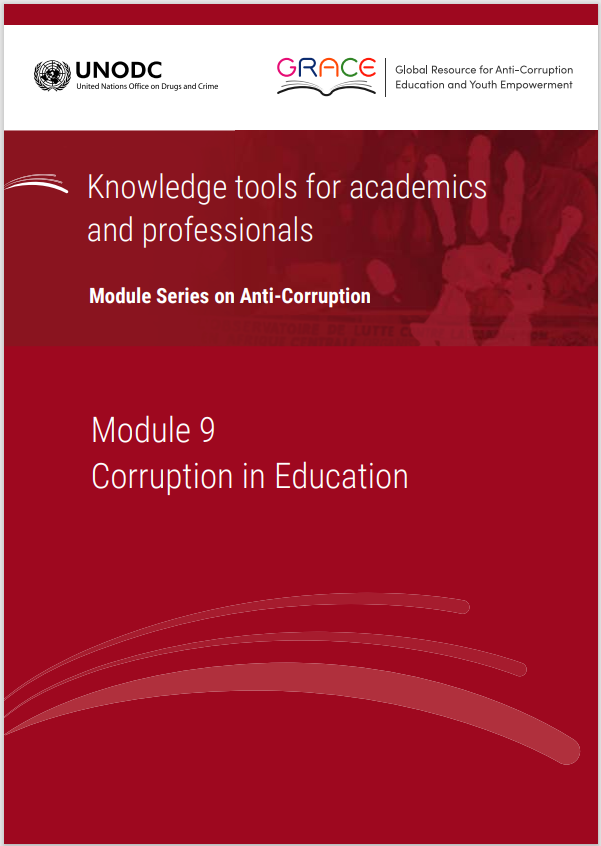
This module is a resource for lecturers
Where does corruption in education come from? A useful way to think about why and when individuals would engage in corruption is to start from the rewards and drawbacks of such acts. A leading model of crime was developed by Becker and Stigler (1974), who showed that individuals will engage in a criminal activity if they calculate that they have more to gain than to lose from it. Benefits may come in the form of money or non-financial advantages, while potential losses or costs may come in the form of punishment, for example shaming, fines or prison. In their mental calculation, individuals also estimate how likely it is that they will be caught and punished - which is based on the probability of detection. This accounting is common across sectors, but the costs, benefits and the chance of detection take specific forms in education. According to Hallak and Poisson (2007, pp. 40-41), the main factors that explain corruption in education are:
On the benefits side:
- The high rate of return : Because people hope to get a well-paid job through educational degrees, some people are willing to pay bribes or engage in other corrupt practices to improve their records on paper or gain a formal qualification. Where school funding or educator remuneration is tied to student performance, there are strong incentives for malfeasance among educators and principals, be it cheating or illicit agreements to attract more students. Jacob and Levitt (2003) discuss the perils of high-powered incentive education systems.
- Low salaries of public officials and educators : In some countries, the salaries of educators do not support even a basic livelihood, or are perceived as unfairly low relative to the workload - which may lead educators to use their position of power to extract payments and other benefits. Borcan, Lindahl and Mitrut (2014) showed how a 25 per cent austerity-driven wage cut for all teachers in Romania led to more cheating in a national exam. As in other sectors, officials and educators may have paid a bribe to gain their position in the first place, so continued fraudulent acts are a predictable outflow.
On the costs side:
- Weak ethical norms and poor rule of law : In places where corruption is widely prevalent, the moral resistance to engaging in corruption is substantially reduced. This factor makes it more difficult to fight corruption in many sectors and countries, including in those experiencing economic crisis or political transition. Moreover, if law enforcement is known to be weak, then punishments and the possibility of detection are virtually absent, making it worthwhile to take part in corruption. To learn more about ethics, see the E4J University Module Series on Integrity and Ethics .
On the detection side:
- The complexity of education and lack of transparent governance : The multiplicity of goals of educational institutions and the over-centralization or decentralization of decision-making processes often make institutional rules opaque to the beneficiaries and the general public. Accountability is diffused across many beneficiaries of education and regulating bodies, making it unclear to whom schools and universities truly answer. The balance often tips towards the bureaucrats, and when they are themselves corrupt, the very concept of accountability becomes moot. On top of this, abuses of confidentiality principles and ad hoc decision-making without a proper paper trail mean that corrupt decisions are more easily covered up and harder to detect.
- The size and distribution of education : Schools, staff and accompanying administrations represent resources that are usually spread across the length and breadth of countries. This makes tracking resources more difficult and oversight of potentially corrupt conduct more complex.
Corruption in education intersects with questions of integrity and ethics in both the private and public sectors, which are discussed in further detail in Module 11 and Module 13 of the E4J University Module Series on Integrity and Ethics and in Module 4 and Module 5 of the E4J University Module Series on Anti-Corruption. For a general discussion of professional ethics, which also applies to education, see Module 14 of the E4J University Module Series on Integrity and Ethics.
Next: Fighting corruption in education
Back to top, supported by the state of qatar, 60 years crime congress.
- lol Badge Feed
- win Badge Feed
- trending Badge Feed
Browse links
- © 2024 BuzzFeed, Inc
- Consent Preferences
- Accessibility Statement
6 Misleading Or Inaccurate Statements This Viral Fetus Development Video Makes, As It'll Be Required Viewing In Some Schools
The video, as in much anti-abortion rhetoric, refers to a cluster of cells making electrical activity as a "heartbeat."

BuzzFeed Staff
After the overturning of Roe v. Wade , anti-abortion groups have taken to schools to further propagate misleading information on reproduction.
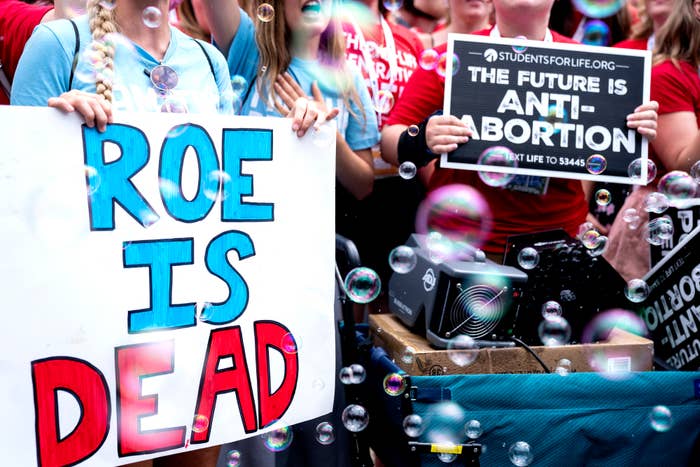
As the Guardian notes, North Dakota became the first state last year to pass a law requiring schools to show a video called "Meet Baby Olivia" — or something in a similar vein. "Meet Baby Olivia" is a video that garnered millions of views since it was posted two years ago. It's made by Live Action, an anti-abortion group that insists its depiction of a fetus is "medically accurate."

A similar video, in the parlance of the North Dakota legislation, refers to “a high-definition video, at least three minutes in duration, showing the development of the brain, heart, sex organs, and other vital organs in early fetal development.”
Tennessee has followed with a "Baby Olivia" law this year. Bills to show such videos in sex education have appeared in at least 10 other states this year, with the video named in at least five.

So, here's some of the many misleading statements the video makes:
1. inaccurate: "this is the moment where life begins.".

This is a subjective statement. Many people do not agree that life begins at conception, even within religions. For example, the Talmud states that life begins at birth in Judaism.
2. Misleading: how old the embryo is.

This video marks the embryo's growth from conception, which is not how pregnancy is typically measured. Instead, it is usually tracked from the last known period. This is important to note because many of the markers used in this video are presented around two weeks earlier than they would be in medical terms. So when the video states that "the buds of her arms and legs appear by four weeks," the UK's NHS states that the development of limb buds begins at six weeks.
3. Inaccurate: "At three weeks and one day, just 22 days after fertilization, Olivia's heartbeat can be detected."

At this time of gestation (in medical terms, around five or six weeks ), the cells that can one day become a heart begin to emit electrical activity. This cannot be detected on a sonogram until some weeks later. As University of California associate professor and OB-GYN Dr. Jennifer Kerns told NPR in 2022, "What we're really detecting is a grouping of cells that are initiating some electrical activity. In no way is this detecting a functional cardiovascular system or a functional heart."
4. Misleading: how an embryo looks.

The image on the left is Live Action's depiction of an embryo at six weeks. On the right is what real pregnancy tissue looks like to the naked eye in the first trimester, courtesy of MYA Network .
5. Inaccurate: "At 11 weeks, she is playing in the womb, moving her body, and exploring her environment."

Compare this with an excerpt from a 2022 review from the International Journal of Environmental Research and Public Health: "The first involuntary fetal movement begins around 7 gestational weeks; independent voluntary movement, such as kicking, commences at 12 weeks as the neuromuscular unit continues to grow. Distinct movement patterns, such as startle, hiccup, stretch, and head or eye movements usually occur at about 15 gestational weeks."
6. Misleading: "Beginning at 18 weeks, ultrasounds show speaking movements in her voice box."

Dr. Liji Thomas puts the development of vocal chords at closer to 28 weeks. The use of "speaking" is subjective, as babies only begin regularly babbling around six months after being born. The anatomy or anomaly scan (i.e. the scan that takes place around 20 weeks) is used to check physical development and see if there are any congenital disabilities or issues with the organs.
You can read more about the proposed bill here .
Share this article.
- Election 2024
- Entertainment
- Newsletters
- Photography
- Personal Finance
- AP Investigations
- AP Buyline Personal Finance
- AP Buyline Shopping
- Press Releases
- Israel-Hamas War
- Russia-Ukraine War
- Global elections
- Asia Pacific
- Latin America
- Middle East
- Election Results
- Delegate Tracker
- AP & Elections
- Auto Racing
- 2024 Paris Olympic Games
- Movie reviews
- Book reviews
- Personal finance
- Financial Markets
- Business Highlights
- Financial wellness
- Artificial Intelligence
- Social Media
France is proud of its secularism. But struggles grow in this approach to faith, school, integration
Students run up a flight of stairs as they make their way to class at Ibn Khaldoun, a private Muslim school, in Marseille, southern France, on April 18, 2024. (AP Photo/Daniel Cole)
Students run up a flight of stairs as they make their way to class at Ibn Khaldoun, a private Muslim school, in Marseille, southern France, Thursday, April 18, 2024. Brought into the international spotlight by the ban on hijabs for French athletes at the upcoming Paris Olympics, France’s unique approach to “laïcité” — loosely translated as “secularism” — has been increasingly stirring controversy from schools to sports fields across the country. (AP Photo/Daniel Cole)
- Copy Link copied
Students speak during an interview at Ibn Khaldoun, a private Muslim school, in Marseille, southern France, Thursday, April 18, 2024. Started in 2009 with 25 students, Ibn Khaldoun now enrolls nearly 400 as one of the few private Muslim schools under contract with the French government. That means they’re financially supported but have to abide by strict curricular and behavioral requirements. (AP Photo/Daniel Cole)
Students pray during recess in the mosque at Ibn Khaldoun, a private Muslim school, in Marseille, southern France, Tuesday, April 16, 2024. (AP Photo/Daniel Cole)
School supplies sit on a student’s desk at a religious studies class for elementary school students at the Cedres Mosque in Marseille, southern France, Wednesday, April 17, 2024. (AP Photo/Daniel Cole)
A woman walks through the center of Marseille, southern France, Friday, April 19, 2024. (AP Photo/Daniel Cole)
The Ould Ibbat family spend a Sunday together at their home in Marseille, southern France, Sunday, April 21, 2024. “It has become a privilege to be allowed to practice our religion,” said Majda Ould Ibbat, who was considering leaving Marseille, France’s second-largest city, until she discovered a private Muslim school, Ibn Khaldoun, where her children could both freely live their faith and flourish academically. (AP Photo/Daniel Cole)
Minane Ould Ibbat, 19, right, watches her brother, Wassim, 11, play video games at their home in Marseille, southern France, Sunday, April 21, 2024. For Minane, as for many French Muslim youth, navigating French culture and her spiritual identity is getting harder. “I ask myself if Islam is accepted in France.” (AP Photo/Daniel Cole)
Majda Ould Ibbat prepares a traditional Morroccan chicken dish at home in Marseille, southern France, Sunday, April 21, 2024. (AP Photo/Daniel Cole)
Family photos are displayed on the wall of the Ould Ibbat home in Marseille, southern France, Sunday, April 21, 2024. (AP Photo/Daniel Cole)
Majda Ould Ibbat, right, and her husband, Lhoussaine, center, share a meal with Imam Mohsen Ngazou, the founding director of the Ibn Khaldoun school, at their family home in Marseille, southern France, Sunday, April 21, 2024. Majda Ould Ibbat was considering leaving Marseille until she discovered Ibn Khaldoun, where her children could both freely live their faith and flourish academically. (AP Photo/Daniel Cole)
An Islamic icon depicting Mecca is displayed in the Ould Ibbat family’s home in Marseille, southern France, Sunday, April 21, 2024. (AP Photo/Daniel Cole)
Students walk outside the mosque at Ibn Khaldoun, a private Muslim school, in Marseille, southern France, Tuesday, April 16, 2024. (AP Photo/Daniel Cole)
Students spend time in the courtyard during recess at Ibn Khaldoun, a private Muslim school, in Marseille, southern France, Tuesday, April 16, 2024. (AP Photo/Daniel Cole)
Student drawings of anime characters hang on the wall in the library at Ibn Khaldoun, a private Muslim school, in Marseille, southern France, Tuesday, April 16, 2024. (AP Photo/Daniel Cole)
A pencil case decorated with the Algerian flag sits on a student’s desk at Ibn Khaldoun, a private Muslim school, in Marseille, southern France, Thursday, April 18, 2024. (AP Photo/Daniel Cole)
Books, including one on Harriet Tubman, are displayed in the library at Ibn Khaldoun, a private Muslim school, in Marseille, southern France, Tuesday, April 16, 2024. (AP Photo/Daniel Cole)
Teachers work in the teachers lounge at Ibn Khaldoun, a private Muslim school, in Marseille, southern France, Thursday, April 18, 2024. (AP Photo/Daniel Cole)
Islamic books are displayed in the library at Ibn Khaldoun, a private Muslim school, in Marseille, southern France, Tuesday, April 16, 2024. (AP Photo/Daniel Cole)
Students attend class at Ibn Khaldoun, a private Muslim school, in Marseille, southern France, Thursday, April 18, 2024. (AP Photo/Daniel Cole)
A student’s shoes sit outside the entrance to the mosque at Ibn Khaldoun, a private Muslim school, in Marseille, southern France, Tuesday, April 16, 2024. (AP Photo/Daniel Cole)
Sunlight shines through a window in the mosque at Ibn Khaldoun, a private Muslim school, in Marseille, southern France, Tuesday, April 16, 2024. (AP Photo/Daniel Cole)
A door stands open at Ibn Khaldoun, a private Muslim school, in Marseille, southern France, Thursday, April 18, 2024. Started in 2009 with 25 students, Ibn Khaldoun now enrolls nearly 400 as one of the few private Muslim schools under contract with the French government. That means they’re financially supported but have to abide by strict curricular and behavioral requirements. (AP Photo/Daniel Cole)
MARSEILLE, France (AP) — Brought into the international spotlight by the ban on hijabs for French athletes at the upcoming Paris Olympics , France’s unique approach to “laïcité” — loosely translated as “secularism” — has been increasingly stirring controversy from schools to sports fields across the country.
The struggle cuts to the core of how France approaches not only the place of religion in public life, but also the integration of its mostly immigrant-origin Muslim population, Western Europe’s largest.
Perhaps the most contested ground is public schools, where visible signs of faith are barred under policies seeking to foster a shared sense of national unity. That includes the headscarves some Muslim women want to wear for piety and modesty, even as others fight them as a symbol of oppression .
“It has become a privilege to be allowed to practice our religion,” said Majda Ould Ibbat, who was considering leaving Marseille, France’s second-largest city, until she discovered a private Muslim school, Ibn Khaldoun, where her children could both freely live their faith and flourish academically.
“We wanted them to have a great education, and with our principles and our values,” added Ould Ibbat, who only started wearing a headscarf recently, while her teen daughter, Minane, hasn’t felt ready to. Her 15-year-old son, Chahid, often prays in the school’s mosque during recess.
For Minane, as for many French Muslim youth, navigating French culture and her spiritual identity is getting harder. The 19-year-old nursing student has heard people say even on the streets of multicultural Marseille that there’s no place for Muslims.
“I ask myself if Islam is accepted in France,” she said in her parents’ apartment, where a bright orange Berber rug woven by her Moroccan grandmother hangs next to Koranic verses in Arabic.
Majda Ould Ibbat, right, and her husband, Lhoussaine, center, share a meal with Imam Mohsen Ngazou, the founding director of the Ibn Khaldoun school, at their family home in Marseille, southern France, on April 21, 2024. (AP Photo/Daniel Cole)
Minane Ould Ibbat, 19, right, watches her brother, Wassim, 11, play video games at their home in Marseille, on April 21, 2024. (AP Photo/Daniel Cole)
Minane also lives with the collective trauma that has scarred much of France — the gripping fear of Islamist attacks, which have targeted schools and are seen by many as evidence that laïcité (pronounced lah-eee-see-tay) needs to be strictly enforced to prevent radicalization.
Minane vividly remembers observing a moment of silence at Ibn Khaldoun in honor of Samuel Paty, a public school teacher beheaded by a radicalized Islamist in 2020. A memorial to Paty as a defender of France’s values hangs in the entrance of the Education Ministry in Paris.
For its officials and most educators, secularism in public schools and other public institutions is essential. They say it encourages a sense of belonging to a united French identity and prevents those who are less or not religiously observant from feeling pressured, while leaving everyone free to worship in private spaces.
A woman walks through the center of Marseille, southern France on April 19, 2024. (AP Photo/Daniel Cole)
For many French Muslims, however, and other critics, laïcité is exerting precisely that kind of discriminatory pressure on already disadvantaged minorities, denying them the chance to live their full identity in their own country.
Amid the tension, there’s broad agreement that polarization is skyrocketing, as crackdowns and challenges mount for this French approach to religion and integration.
While open confrontations are still numbered in the dozens among millions of students, it has become common to see girls put their headscarves back on the moment they exit through a public school’s doors.
Students walk outside the mosque at Ibn Khaldoun, a private Muslim school, in Marseille, southern France, on April 16, 2024. (AP Photo/Daniel Cole)
“Laws on laïcité protect and allow for coexistence — which is less and less easy,” said Isabelle Tretola, principal of the public primary school whose front gate faces the door to Ibn Khaldoun’s small mosque.
She addresses challenges to secularism every day — like children in choir class who put their hands on their ears “because their families told them singing variety songs isn’t good.”
“You can’t force them to sing, but teachers tell them they can’t cover their ears out of respect for the instructor and classmates,” Tretola said. “In school, you come to learn the values of the republic.”
Secularism is one of four fundamental values enshrined in France’s constitution. The state explicitly charges public schools with instilling those values in children, while allowing private schools to offer religious instruction as long as they also teach the general curriculum that the government establishes.
Unlike the United States, where fights over what values schools teach cleave along partisan lines , support for laïcité is almost universal in France’s political establishment, though some on the right criticize it as anti-religion and on the left as a vestige of colonialism.
Government officials argue the prohibition against showcasing a particular faith is necessary to avoid threats to democracy. In the 19th century, those were seen as stemming from the political influence of the Catholic Church. Today, the government has made fighting radical Islam a priority , and secularism is seen as a bulwark against the feared growth of religious influence on daily life, down to beachwear .
“In a public school, the school for everyone, one behaves like everyone else, and should not make a display,” said Alain Seksig, secretary general of the Education Ministry’s council on secularism. It has produced guides for teachers and students after an increase in incidents, especially over headscarves.
“What do we say to the girl who says, ‘I don’t want to wear it under pressure?’ The school is on her side,” he added.
Teachers work in the teachers lounge at Ibn Khaldoun, a private Muslim school, in Marseille, on April 18, 2024. (AP Photo/Daniel Cole)
Islamic books are displayed in the library at Ibn Khaldoun school on Tuesday, April 16, 2024. (AP Photo/Daniel Cole)
For many teachers and principals, having strict government rules is helping confront multiplying challenges. The curriculum — from music to evolution to sexual health — is a new target, though all public students receive a “secularism in school” guide that notes objecting to teaching on the basis of religion is forbidden.
Some 40% of teachers report self-censoring after the attacks on Paty and another teacher, Dominique Bernard, slain last fall by a suspected Islamic extremist, said Didier Georges. He’s in charge of secularism issues for SNPDEN-UNSA, a union representing more than half of France’s principals.
Like him, Laurent Le Drezen, a principal in a small city about an hour from Marseille and a leader of another education workers union, SGEN-CFDT, sees a nefarious influence of social media in the growth of Muslim students challenging secularism at school.
“I’m intransigent on laïcité, because it helps with national cohesion, national community. It’s not a negation of religion,” Le Drezen said.
His classroom experience in Marseille’s Quartiers Nord — often dilapidated suburbs with projects housing mostly families of North African origin — also taught him the importance of showing students that schools aren’t coming after them for being Muslim.
At Marseille’s Cedres Mosque, next to the projects, Salah Bariki, who has worked on interreligious affairs with city hall, said youth are struggling with exactly that sense of rejection from France.
“What do they want us to do, look at the Eiffel Tower instead of Mecca?” Bariki quipped. Nine of ten young women in the neighborhood are now veiled, “for identity more than religion,” he added.
To avoid a vicious cycle, more — not less — discussion of religion should be happening in schools, argued Rabbi Haïm Bendao. He runs a small conservative synagogue in a nearby neighborhood, and wishes he could give talks about integration in public institutions as he routinely does in private ones, in partnership with imams.
“To establish peace, it’s a daily effort. It’s crazy important to speak in schools,” said Bendao, who has gone to both Ibn Khaldoun and the Catholic school across from it, Saint-Joseph, which also enrolls many Muslim students.
School supplies sit on a student’s desk at a religious studies class for elementary school students at the Cedres Mosque in Marseille, on April 17, 2024. (AP Photo/Daniel Cole)
Students attend class at Ibn Khaldoun, a private Muslim school, in Marseille, on April 18, 2024. (AP Photo/Daniel Cole)
Its principal, Cédric Coureur, says private schools have the advantage of being allowed to address questions students might have about God — and provide the kind of answers “within the republican framework” that helped him integrate into France as the son of Mauritian immigrants.
“School welcomed me, it gave me the keys to love this country without telling me to do so,” Coureur said. “The French state doesn’t recognize being Christian or Muslim or Jew or Buddhist, it recognizes that you are French.”
Several families at Ibn Khaldoun said they chose that private school, however, because it can support both identities instead of exacerbating all-too-public doubts over whether being Muslim is compatible with being French.
“When I hear the debate over compatibility, that’s when I turn off the TV. Fear has invaded the world,” said Nancy Chihane, president of the parents’ association at Ibn Khaldoun.
A door stands open at Ibn Khaldoun, a private Muslim school, in Marseille, southern France, on April 18, 2024. (AP Photo/Daniel Cole)
At a recent spring recess where girls with hijabs, others with their hair flowing in the fierce local wind known as Mistral, and boys all mingled, one headscarf-wearing high-schooler said transferring to Ibn Khaldoun meant both freedom and community.
“Here we all understand each other, we’re not marginalized,” said Asmaa Abdelah, 17.
Nouali Yacine, her history and geography teacher, was born in Algeria — which was under French colonial rule until it won independence in 1962 in a violent struggle — and raised in France since he was 7 months old. While his parents would have considered it treason to identify as French in the anti-colonial context, his daughter — a public school student — tells him she knows no other identity.
“We are within the citizenry. We don’t pose that question, but they pose it to us,” Yacine says.
Started in 2009 with 25 students, Ibn Khaldoun now enrolls nearly 400 as one of the few private Muslim schools under contract with the French government. That means they’re financially supported but have to abide by strict curricular and behavioral requirements.
The school’s founding director, Mohsen Ngazou, who’s also an imam and president of the national association Muslims of France, is equally adamant about respecting religious and education obligations.
He recalls once “making a scene” when he saw a student wearing an abaya over pajamas — the student code prohibits the latter alongside shorts and revealing necklines.
“I told her she wasn’t ready for class,” Ngazou said. “The abaya doesn’t make a woman religious. The important thing is to feel good about who you are.”
Associated Press religion coverage receives support through the AP’s collaboration with The Conversation US, with funding from Lilly Endowment Inc. The AP is solely responsible for this content.

IMAGES
VIDEO
COMMENTS
Thus, this study highlights the role of educational leaders' awareness of corruption in schools on anti-corruption actions (e.g., formulation of moral norms) and on encouraging stakeholders to prevent and control corruption and help build long-term corruption prevention mechanisms. ... School of Education and Social Sciences, 5(4), 227-231 ...
Over 40 States reported on AC (and integrity) education initiatives at all levels of education: primary, secondary and tertiary. Main messages: Education is an important tool for preventing corruption and fostering a culture of integrity. Integrity education is an essential part of AC strategies and mandates of AC agencies.
Corruption, the ICAC for short, tackles corruption in Hong Kong through its school education programme. This comprehensive programme contributes significantly to the increase in public awareness of the importance of the anti-corruption cause in Hong Kong. The Bad Old Days 2. Before the setting up of the ICAC in 1974, the investigation of
Examples of corruption in education range from ghost schools and fake diplomas, to missing textbooks, stolen school supplies, absent teachers and misallocation of school grants. ... of the key stakeholders together to fight against the problem and offer expert advice," IIEP's Senior Researcher on anti-corruption and ethics in education ...
definition) "paid to receive preferential treatment for something that the bribe receiver is required to do by law"2. Against the rule corruption - "a bribe paid to obtain services the bribe receiver is prohibited from providing"3. Corruption need not always involve abuse of power.
The Global Resource for Anti-Corruption Education and Youth Empowerment initiative promotes the central role of education and youth in preventing and countering corruption by bringing together key stakeholders, developing anti-corruption educational tools and providing a platform for information exchange.The GRACE initiative works at all levels of education (primary, secondary, tertiary, as ...
Drawing on existing good practices from around the world, Education for Integrity provides a comprehensive framework for implementing education for public integrity in the school system and in the classroom. It also contains useful sample lessons and tasks on anti-corruption, values formation and understanding the rule of law.
Corruption reduces access to education - from pre-school to university. It creates low-quality learning environments, where the poor suffer the most, and undermines our collective welfare. ... In order to reduce such practices, particular attention must be paid to integrating anti-corruption issues into education planning, with an in-depth ...
The Political Declaration, adopted at the Special session of the General Assembly against corruption in June 2021, places anti-corruption education and training at the core of a holistic and multidisciplinary approach to promote transparency, accountability, integrity and a culture of rejection of corruption as a basis for preventing and countering corruption.
1.3 Corruption and key education-related development goals 14 1.4 Defining governance and corruption 17 1.5 other notable background issues for this review 21 2. Findings from the desk review of anti-corruption tools and practices 23 2.1 rule of law/integrity 23 2.1.1 legislation 23 2.1.2 Sanctions 25 2.1.3 Codes of conduct 25
Anti-corruption in the education sector: Tools and strategies 29 ... Integrating values, ethics, and anti-corruption education in the school curriculum 44 Conclusion 45 References 48 a. About the author Monica Kirya Monica Kirya is a lawyer and Senior Adviser at the U4 Anti-Corruption Resource Centre. She coordinates the themes on mainstreaming ...
In its 2011 report on corruption in the education sector, the United Nations Development Programme (UNDP) observed that there are four main categories of tools used to combat corruption: Rule of law (control and sanction) Public administration and systems (corruption prevention) Transparency and accountability (duty bearers and rights holders ...
The experts emphasized the need for increased anti-corruption education globally and advised on core areas to be addressed through the Modules. They considered it paramount that the Modules ... private schools and universities, such as cheating, bribery and sexual corruption. Since the causes
the anti-corruption values. In the process, the Anti-corruption education is not just a medium for the transfer of knowledge, but also an emphasis on character formation, anti-corruption values and moral awareness in the resistance against corruption. Anti-corruption education is also an instrument to develop study skills in capturing
Evaluation of the risks of corruption in education. IIEP carries out exhaustive evaluations of the risks of corruption in the education sector of a given country, including in the areas of pre-school, primary, secondary, and higher education, as well as technical and vocational training (TVET). Based on its experience, IIEP has developed its ...
The Anti-Corruption Knowledge Hub is an online space where Transparency International presents its research output. ... It affects virtually all aspects of education, from school infrastructure to teacher salaries and academic curricula. Resources pilfered from education means scarcity of learning and research equipment, poor-quality school ...
In fact, education and training directly fights the scourge in peoples' minds by changing the general attitude that corruption is too big and deep-rooted to fight. The most effective training and education programs focus on providing a strong balance between academic and theoretical knowledge on topical issues, and core competencies in areas ...
Monitoring, evaluation, and learning should be built into anti-corruption reforms so that measures can adapt to changing contextual realities. Including values, integrity, and anti-corruption education in school curricula is a long-term strategy mandated by the United Nations Convention Against Corruption.
The objective of anticorruption education is to raise a generation of citizens who despise rather than tolerate or embrace corruption, thus reducing the likelihood that corruption will remain embedded in the culture. Because school is a place where children spend most of their time, it serves as an effective medium for social acculturation at ...
Fully seven decades after the U.S. Supreme Court decided Brown v. Board of Education, Black students and their schools remain functionally separate and unequal. Pre-Brown de jure segregation has ...
The state projects between $700 and $800 million of public funds will pay for the private and religious education of Arizona students through the ESA program this year.
Violation of the anti-discrimination policy could result in an employee losing their job, according to Neal Ramee, a school board attorney. This story was originally published May 28, 2024, 5:53 PM.
the OECD Integrity Forum; the International Anti-Corruption Conference (IACC) and the Comparative and International Education Society (CIES). ... most emblematic measure of open government in education. School management committees: a move towards open government in education in India by Sunita Chugh • 2021, 67 pp. ISBN: 978-81-953899-4- ...
Fourthly, corruption enhances inequality. When money is sent back and siphoned off from areas of much-needed services such as health and education, rather than invested in development, the very few will continually get richer while the poor will continue to remain poor. They two will continue to grow further apart unless strenuous efforts are made.
USAID is the world's premier international development agency and a catalytic actor driving development results. USAID's work advances U.S. national security and economic prosperity, demonstrates American generosity, and promotes a path to recipient self-reliance and resilience.
Responding to the deluge of new investigations into antisemitism on college campuses since Oct. 7 and the subsequent war in Gaza, Sens. Jacky Rosen (D-NV) and James Lankford (R-OK) wrote to Education Secretary Miguel Cardona on Monday to call on him to appoint a dedicated official to oversee the Department of Education's efforts to fight antisemitism.
According to Hallak and Poisson (2007, pp. 40-41), the main factors that explain corruption in education are: On the benefits side: The high rate of return: Because people hope to get a well-paid job through educational degrees, some people are willing to pay bribes or engage in other corrupt practices to improve their records on paper or gain ...
6 Misleading Or Inaccurate Statements This Viral Fetus Development Video Makes, As It'll Be Required Viewing In Some Schools. The video, as in much anti-abortion rhetoric, refers to a cluster of ...
The school wants to avoid any problems with an anti-war protest camp. Wayne State University in Detroit suspended in-person classes and encouraged staff to work remotely to avoid any problems with a pro-Palestinian encampment. ... Critical infrastructure workers are expected to report to campus," the school said in a statement around 5:30 a.m.
Secularism is one of four fundamental values enshrined in France's constitution. The state explicitly charges public schools with instilling those values in children, while allowing private schools to offer religious instruction as long as they also teach the general curriculum that the government establishes.